Research Report
The Store of the Future: An Exploration & Planning Guide
The Store of the Future: An Exploration and Planning Guide examines the ways the digital world is blending with the traditional world and emerging technologies are reshaping the shopping experience.
Although the report doesn’t offer one specific path forward, it outlines many ways traditional retailers could employ artificial intelligence, augmented reality, virtual reality and even robotics to enhance the shopper experience. Like all council reports — designed by retailers for use by other retailers — this new study should serve as a catalyst for discussion and action.
One thing is certain: the future is going to look very different than the past. Now is the time for retailers to take a close look at where shopping is headed and talk seriously about how to adapt.


Preface
Introductions
The Coca‑Cola Retailing Research Council
This Store of the Future publication is sponsored by the Coca Cola Retailing Research Council (CCRRC) of North America. The CCRRC was created by The Coca‑Cola Company in 1978 to provide third-party research to its retail customers. Today, the Coca‑Cola Company continues to support the Council to ensure that all grocery and convenience retailers have access to relevant insights that can help them grow their businesses. The CCRRC councils are present on five continents.
CCRRC members identify projects they deem to offer significant value to the entire industry, as well as their own companies. The retailers of the CCRRC determine their own path, including the projects they pursue, and the consultants hired to work on various projects: “Research by Retailers, for Retailers.”
The CCRRC commitment to improve the entire retailing industry is supported by http://www.ccrrc.org/, a website where all completed studies are made available for anyone to read and download. Current members that commissioned and participated in the building of this report:
Rod Antolock
Kroger / Harris Teeter
Steve Junqueiro
Save Mart
Armando Perez
HEB
Mimi Song
Superior Grocers
Peter Whitsett
Meijer
Jonathan Berger
The Consumer Goods Forum
Jay Marshall
Hy-Vee
Leslie Sarasin
FMI
Judy Spires
King’s
David Zallie
Shop Rite
Steve Goddard
Winco
Rich Niemann
Niemann Foods
Garry Senecal
Loblaws
Mike Vail
Delhaize
Michael Sansolo
Research Director
Kantar Consulting
For this project, the CCRRC partnered with Kantar Consulting, a global specialist growth consultancy with over 1,000 analysts, thought leaders, software developers and expert consultants located across developing and mature markets worldwide.
We help our clients develop and execute brand, marketing, retail, sales, and shopper strategies to deliver growth.
We track 1,200 retailers globally, have purchase data on over 200 million shoppers and forecast social, cultural and consumer trends across the world.
Our Retail, Sales & Shopper (RS&S) practice enables clients to sell more effectively and profitably by turning insights into action and shoppers into buyers.
In an ever more complex and competitive environment, Kantar Consulting has relevant strategies, insights and analytics to help clients grow their businesses, backed by our team of experienced consultants and next-generation organizational capabilities.
For more information, visit consulting.kantar.com.

Overview for the Reader
Business leaders worldwide are contending with various aspects of a common dilemma: they can all see the future bearing rapidly down upon them and must adapt quite literally on the fly. But several aspects of the future remain unclear, especially given the speed of changes in technology, media, products, and people. Without knowing the details of what the journey to the future requires, they don’t know “what to pack” to be prepared and competitive. So, more often than not, they are grabbing everything that looks vaguely like it may be useful or that seems to be popular with other, equally threatened competitors.
Other industries, especially the technology and medical sectors, have been buying out and frequently overpaying for hundreds of companies (of all sizes and areas of expertise) for years to prepare for this unknown. In retrospect, these moves to acquire new skills and capabilities often seem to be of questionable value as leaders search for a tool, advantage, or pipeline solution to make them uniquely competitive in the near term and future. A large part of the venture capital rationale for investing is based on this race to find the ‘killer app’, an acceptable risk since the future need is still poorly known.
But the retail sector does not lend itself to such flexibility. The demands of everyday execution in complex retailing organizations means that bolt-on structures, grand acquisitions, or new functionalities of uncertain utility return of investment (ROI) are rarely viable. Key barriers are not just investment levels. Barriers also include balancing near-in time requirements and strategic focus, which are critical for a retailer to stay relevant to the shopper and remain competitive in the marketplace. Unsustainable fads can be even more expensive for corporations than categories, and can distract retailing “energy” from the core mission. Unlike research, retailing changes must take place in the here and now, operational time.
At the same time, defining what the store of the future can and should be provides planning topics to consider in context, helping to guide the inevitable tradeoffs between investment in an ideal vision or solution versus the realities of meeting today’s financial obligations. To that end there is a need to not only address evolving shopper expectations but also to ensure ROI, while still contending with legacy infrastructure, changing needs for employee skills and training, and the accelerating technology shifts. In short, the store of the future needs to be practical in discussion and planning, not merely an abstract vision statement.1
Our research methodology and resulting insights are based on a core belief that, despite the waves of change impacting the retailing industry, physical stores will continue to play a vital role for all parties involved in retail — shoppers, retailers and suppliers.
That role will continue to be enhanced and impacted, and certain functions are clearly undergoing more strain and thus will require more revision than others. Today’s “mass market” (tactical) responses that are untethered to a broader strategic vision won’t carry the day. So our research was designed to imagine the retail ecosystem of 2030, and draw logical conclusions of how the “store” will evolve starting today to adapt to the future state of tomorrow. To that end, we studied what’s developing today, plotted out what’s likely to evolve in the future—grounded in shopper behaviors and retailer capability development—to paint a picture of the store of the future. Our intent is to leverage this research to uncover a viable strategic vision to guide store-focused planning and development in the coming decade.
1 In-store marketing agencies, media planners, and technology providers may also find value in assessing future partnership opportunities highlighted in this study.
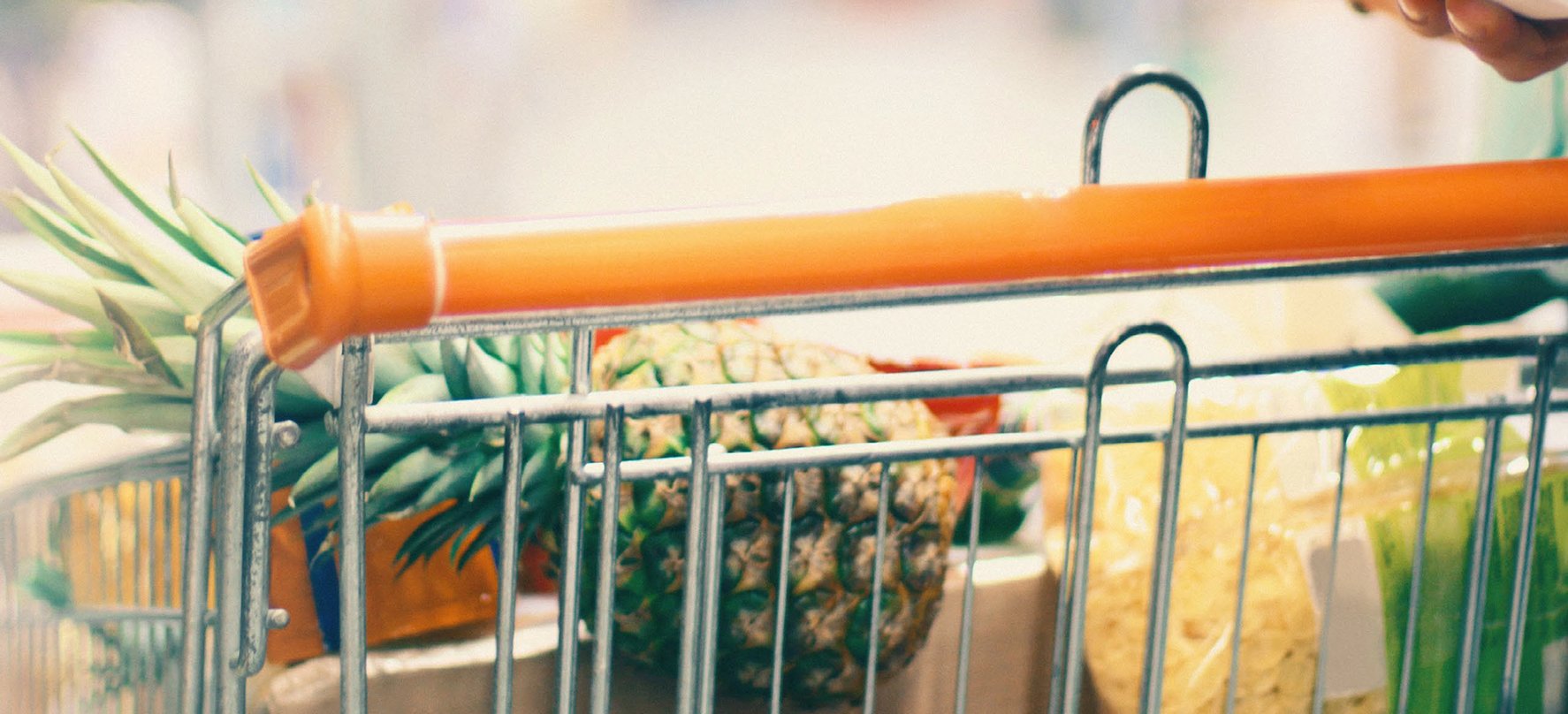
Key Findings to Consider
Predicting the future should by design provide some level of surprise, but it’s not an impossible feat. We often lack a clear view of ten years out not because trends are not clear today, but rather because almost everyone who tries to extrapolate the future leans to the side of caution — it’s tough to be bold when projecting what’s likely to evolve, especially when attempting to predict when. Nonetheless, our research has revealed some interesting surprises, largely stemming from how many fundamental retailing elements are undergoing massive change. For example, we’ve learned how vital the tight coordination must be linking store employee training, store management and operations, and the shopper’s digital experience — particularly in fulfillment. With an almost endless array of potential implications from our research, we’ve condensed our key takeaways and planning themes into a reasonable set of elements to guide future action.
The key findings for where the management of the store of the future will need to focus are discussed on the following pages.
Shopper Enablement
Delivering a totally seamless trip will require enabling the “fully integrated” shopper using equally integrated information systems during preshop, transit, and then in-store. The retailer of the future will need to enable shoppers and flawlessly meet their needs as they plan a trip, complete ordering from home or work, even interact while the shopper is in transit. Multiple and flexible fulfillment options will be provided to the shopper in a reliable, flexible, and seamless manner. The retailer of the future cannot and should not attempt to separate the store or the shopper from the digital world.
Linking the store to product authenticity, quality sourcing, and food safety — informing and improving product assortment and selection with references to health, wholesomeness and quality, as well as connectivity back to “the farm” — the store must embrace its role of communicating and ensuring quality sourcing and product reliability. Educated, curious, and risk-averse shoppers will want to validate the health benefits of products; be informed of possible recalls or threats in real time; and be assured of a level of wholesomeness, consistency, and ethics on a variable but increasing “scale of judgment.” This relationship must be two-way and interactive — think ratings and reviews — not a one-and-done advertising program. The store of the future must enable the education and informed judgment of shoppers and take a position of being a meaningful advocate and local resource for an increasingly concerned — but also adventurous — community eager to experience new things without risk.
Packaging up the total food solution — whether a single meal solution or a week’s worth of dinners — the store will become a meaningful resource for loyal shoppers. The store of the future will need to communicate effectively, guiding the shopper to relevant rewards, healthy diet choices, and product usage. When the shopper asks, “What’s for dinner next week?” the store of the future needs to answer, incorporating a more complete understanding of the individual shopper, history, preferences, health concerns, and similar purchase decision factors. Moreover, future 3D printing of new food ingredients will open the door to increasingly customized flavors and textures not currently known.
Technology Deployment
Effectively using and expanding the role of Financial Technology (fintech) to shift shoppers’ focus from price sensitivity to value created by a frictionless experience. Shoppers will always care about managing their money, but increasingly they’ll care more about saving time. As more investment brings down the relative cost of things like automatic payment, home delivery, and auto-replenishment, shopper expectations will continue to rise. Offering a good price will always matter — but that will become the cost of entry, rather than the driver of shopper loyalty. Technology will be deployed to readily identify, validate, and assist shoppers throughout the shopper journey into, throughout, and while exiting the store, delivering a frictionless experience.
Providing an interactive shopping experience, leveraging digital and augmented reality in the store for both the shopper and the employees. The store of the future will have available a wide range of technology, ranging from heads-up, verbal/audio interfaces for employees, to integrated in-store robotics to improve operations, to interactive information and navigational support for shoppers. Technology will enable a higher level of responsiveness, connecting inventory management, customer service, resource deployment, merchandising, and marketing.
Effectively deploying integrated digital fixtures in the center store will be critical to expand shopper awareness. Flat signs and intrusive shelf talkers must evolve from what they do today. As smartphones increasingly offer active, colorful, and even augmented reality, the store must be enabled to interrupt the flow of competing communications to reach shoppers even while they are in the aisle. This capability should also morph regularly to incorporate evolving media types to help keep the experience fresh, but also reliable as an enhancement of benefits to shoppers as they visit the store over time.
Providing more options and new interfaces to converse with shoppers — sense, respond, and engage further. Merchandising, AI/robotics, and employees will be integrated such that when working with shoppers they can sense shopper needs sooner, respond more creatively, and drive a longer conversation. That in turn creates new metrics for measuring how these work to create a range of outcomes, especially increased total spend and return engagement. The store will be measured in ways related to the success of that conversation over time.
Enabling frictionless transactions to complete the sale, providing for payment security and speed. Face and motion recognition, along with the expanded norms of electronic signatures, offer additional areas of retail technology that will improve transactions, individual identification, and speed of interaction. Proper implementation will enable real-time management, monitoring, and improvement, reducing the friction currently inherent in completing the sale. At the same time, identification and verification layers will help reduce shrink in a range of new ways.
Leveraging Core Assets
Improving the (critical) interdependencies between Employee and Manager — staffing with real people will matter in future retail — but not in the same ways we think about today. With just a few exceptions, most retail staffers are divided into a large pool of replaceable workers — characterized by minimal formal training and separated from key skilled positions by pay scales, experience, and longevity. Retail in the future will have fewer of the former and a lot more of the latter — and they will need significantly more new capabilities and skills than they currently possess. The retail store of the future will allocate more time and investment in training, which will enhance overall job satisfaction and retention rates. New operational processes will be needed. They will incorporate new and better applications throughout the store as they become more sophisticated to cope with complex requests — as the norm rather than the exception during other work flows. Good design will enhance food service, for example, to address both the shopper benefits and experience of in-store fulfillment.
Leveraging the store to guide total business operations, including key performance indicators (KPIs) — financial planning and KPIs will evolve to measure success. Such changes will create the operational store of the future, but will also require new means and metrics for managing and directing the enterprise at all levels. The future business will generate far more data than is the current norm. This will lend itself to more dynamic and more situational KPIs such as collective shopper time engaged with merchandising, successful hand-offs of employees to robots in meeting shopper needs, and the effectiveness of new forms of transactions to reduce liabilities and increase asset turns.

Scenarios of the Future
The future is often easier to describe than to visualize, considering how the extraordinary of today will be considered quite ordinary in just a decade’s time. In the future, stores will still enable interactions between shoppers and employees; however, we must consider different points of view regarding how a “normal day” for each may unfold. The digital and Internet-enabled landscape will be more pervasive than what we experience today, but also more accepted as an integrated background to the store and the shopper. Consider as well how changes in technology, processes, and enablers become quickly accepted as the new normal.
The Shopper in the Store
The shopper of the future will be virtually connected to a range of groups—service organizations, family and home networks, even her key retailer—with full expectation that all of them will integrate seamlessly throughout her day, not as ongoing “interruptions.” Her kitchen appliances add items to her shopping list, her home network monitors inventory and consumption rates. She will likely expect that the store, her phone, and her home network are in constant synchronization. Her purchase history will be transparent, her product preferences known and catered to. Her preferred retailer is aware of her as a unique individual, as a purchase agent for her family, and as a shopper with a series of nested ranges of tastes, needs, and areas of interest.
Our research methodology and resulting insights are based on a core belief that, despite the waves of change impacting the retailing industry, physical stores will continue to play a vital role for all parties involved in retail — shoppers, retailers and suppliers.
As the shopper traverses the store, messaging appears, much of it targeted to her purchase history and expressed product preferences. She has opted out of some, accepted others, and has the choice to ask for more detail at certain stations along the way. Much of this information is seamlessly transmitted to her physically embedded SmartSystem™, which long ago replaced many of the functions of her external phone. Because the SmartSystem is part of her physical body, it allows her to hear content without the use of speakers or earbuds. Other shoppers wandering around the store are using older, handheld systems, but she is an early adopter.
Her list is shorter than it used to be—a good deal of her regular replenishment purchasing was completed and delivered to her home several days ago, as it is every week. Although the center of the store still exists, it is much smaller than it used to be—much of the former inventory now transships directly to her home without spending time on the store shelf. She doesn’t really notice several of the changes, or care why—but she does recognize that it is much easier to walk the store and find her favorite items than it used to be. With the bulk of replenishment items now delivered automatically, the trip to the store takes much less time.
Less rushed, she has a few more minutes to browse and is pleasantly surprised at several new product offers—in most cases the information systems built into fixtures of the store allow her to examine products in detail if she desires. This functionality offers helpful information related to ingredients, nutritional information, origins and sourcing, along with peer reviews of the product and the price. From time to time her queries connect her to centralized store information systems run by a limited but effectively programmed artificial intelligence (AI) “agent” who manages a brief conversation with her. This interchange is routine, and now expected. The store is ever changing, presenting new products and bringing other helpful options to her attention. Over the course of several trips, she is usually exposed to something new, whether a product, a service, or some combination of the two. Sometimes she buys them, sometimes she adds them to her home-delivery list, and at least one thing, though interesting, she tags for future consideration. It is not clear whether this tag remains on her own personal system or is managed by the store. She doesn’t care. Her facial and emotional reactions to new offerings are noted and collected as part of the store monitoring process—that live response data is valuable to the store.
At the bakery, she discloses a custom request, a birthday cake for her youngest, a toddler. A higher level AI intercepts and prioritizes her request, queues it to the human staff, and engages customer service. A record in this shopper’s file notes the occasion and the date of the toddler’s birthday (and age) for future reference and places it in the store’s memory. She will receive a relevant prompt next year, along with existing special dates already registered—her anniversary and several observed holidays.
In the produce department she makes some choices based on bulk price, others on seasonal availability, and some based on origin information. She is fond of local and regionally harvested products. At one point, still unsure, she asks a manager about the ripeness of a melon and they have a pleasant conversation about how to choose based on freshness. The manager calls her by name, as the store recognized her, and the system prompted the manager through a heads-up display to approach her. Though she could have asked the produce robot for advice, the shopper prefers to talk to a live person when in the department. In the wine department, however, she prefers interacting with the wine-bot. She relies on it for recommendations, and it doesn’t make her feel ignorant. The wine robot also amuses her because it is decorated to look like an old-fashioned butler.
The robot also asks if she is pleased with the custom cake that she just ordered and engages in a very human-style conversation about her preparations for the toddler’s upcoming birthday celebration. Both answers are tabulated to the store AI—one for assessment of customer service and the other for potential sales and marketing opportunities. She hardly notices—she is accustomed to the various elements of the store cooperating in a seamless way. To her, the entire store is like a very helpful concierge service, a well-organized personal assistant.
As she moves through the store, selecting products, her choices are tabulated as they enter the basket. When finished, she is charged automatically and seamlessly. There still are cash registers near the exits—but she rarely uses them. Behind her, unnoticed, robots stock shelves, unload trucks, scan shelves, and reorder products. If it were late in the evening the robots would be more obvious, but it’s afternoon, so robots are scarce on the floor. The cleaning and maintenance robots only emerge at night.
As she drives home, she recalls something she forgot to purchase, but since it isn’t urgent, she simply tells the car, which will pass it along to the house, where it will be added to her next order. After all, she has more important things to think about.

A Vision of the Retailer's Future
The store manager is walking the floor, examining the status of perishables by checking her device to measure the various gas levels and air quality variations that could signal issues. Measurements reveal that melons are in the right state to be sold, but the potatoes are getting close to turning bad. Making a digital-voice note to the department lead, she then repeats the monitoring process for chill cases, monitoring for uneven cooling, leakage from cases, and deli hygiene at the back counter to verify cleaning process adherence. While moving to the in-store restaurant food service area, she is notified by her earpiece of a shopper who has been studying the melons for longer than expected. She quickly diverts to help the shopper find that elusive ‘perfect’ melon while being quietly prompted to ask after the shopper’s family. She makes a comment to the shopper, prompting the wine-bot to check in with the shopper as well. She also notes that the shopper mentioned the wine-bot’s butler costume was amusing and leaves herself a note to explore the idea of putting other costumes on other shopper-facing robots during the upcoming holidays. It might add some fun to the store.
In the store of the future, the manager will still be analytical and decisive, managing a complex environment, but her responsibilities will stretch across the company, the store, and any shoppers seeking assistance.
Lately, the food service area has been a concern, mainly due to the turnover of labor and issues with the automated systems involved in prepping core menu items. The systems are creating a quality sandwich and the wrap is fine, but the timing of production is not matching to spikes in demand at lunch. Investigating a bit, the manager finds that the point of sale is reporting back the information 30 minutes off the purchase — this can be corrected via a small verbal adjustment to reconcile. Another challenge has been the inclusion of the 3-D printer for production of unique food items such as the new meat substitute meal pockets in a lentil-based bread wrap. Though the machine is working to spec, the seasoning recipe defaults to a basic condiment — yet the optional one is being ordered more often. The manager sets up a quick call to review a video of the issue with her chain office and the printer’s manufacturer — the manufacturer can provide a software patch to correct the problem immediately.
The exterior parking lot monitors the arrival of a key loyal shopper, and the manager moves back to the front door to greet her by name; while walking across the store, the manager polls the system to check on the labor costs, sales, and gross margins for the food service area. As expected, the issue with preparation has depressed margins, and the uneven nature of the new labor is impacting productivity. Moreover, further data analysis notes key concerns with the center store surrounding the food solution — overall sales in related categories are softer than expected. Seeing that her actions appear to be addressing the issues, she makes a management note to review the situation again just after the lunchtime rush the next day.
Checking on external orders being made by shoppers for pick-up and for home delivery requests from one of the smart home services, she is reassured that all is running at historic levels. She has also received a request from a supplier that monitors the health of subscribers to promote more meal supplements. The manager reviews the options against sell-through and accepts a few suggestions from the AI system. She comments internally to her procurement group to review the additional requests against existing program metrics. Overall, the performance of center store into the fulfillment of pick-up is exceeding expectations, and she chooses not to adjust the automated inventory ordering.
The Shopper
The Rise of the Epicurean
Today and in the future, shoppers are becoming increasingly selective in their approach to shopping. This balancing of time, energy, and money against “shopper returns” simply means shoppers are savvy. They want to satisfy themselves through good experiences, both in acquiring and consuming good food, but with more emphasis on how all of that aligns well to a lifestyle. The shopper has become empowered in a number of ways, making better decisions and informed tradeoffs via new product information, expanded services, and cost-cutting through reliance on retailer ‘own label’ items. The shopper’s behavior reflects the fragmentation of needs and desires balanced by the constraints of time and money. All of this tradeoff and curation behavior has been enabled via new channels of social media learning and peer-to-peer reviews and interactive communications.
In short, the modern shopper has become an “Epicurean philosopher” of sorts, dedicated to the positive results of seeking pleasure while also honing in on simplicity. The store today and in a decade’s time will need to reflect this duality — in effect, serving an endless supply of “wish list” items while simplifying the entire shopping experience.
The emergence of the Epicurean Shopper is a result of his or her ability to make choices based on self-gratification and simplicity. eCommerce, along with affordable luxury, has created the means of enabling both.
Future shoppers — across all age cohorts and economic circumstances — will be less likely to accept routine or mundane products and standardized services. Instead, they’ll seek out products and services that are personally resonant and targeted. They will also be impatient with irrelevant advertising messages or navigating options of no personal interest or value.
For Epicureans, self-gratification (What do I want?) is the motive that informs key decisions about where, when, and how to shop; simplicity (Is this experience easy or fun?) is equally key, but simplicity is defined by the eye of the beholder. Self-reference becomes the “normal process” of fitting new selections into the overall lifestyle and supporting routines.
The Epicurean mindset shapes the future shopper by bringing to decision-making self-gratification, self-reference, and simplicity. Retailers will need to address the concerns to the left to reframe their value to shoppers in the future.
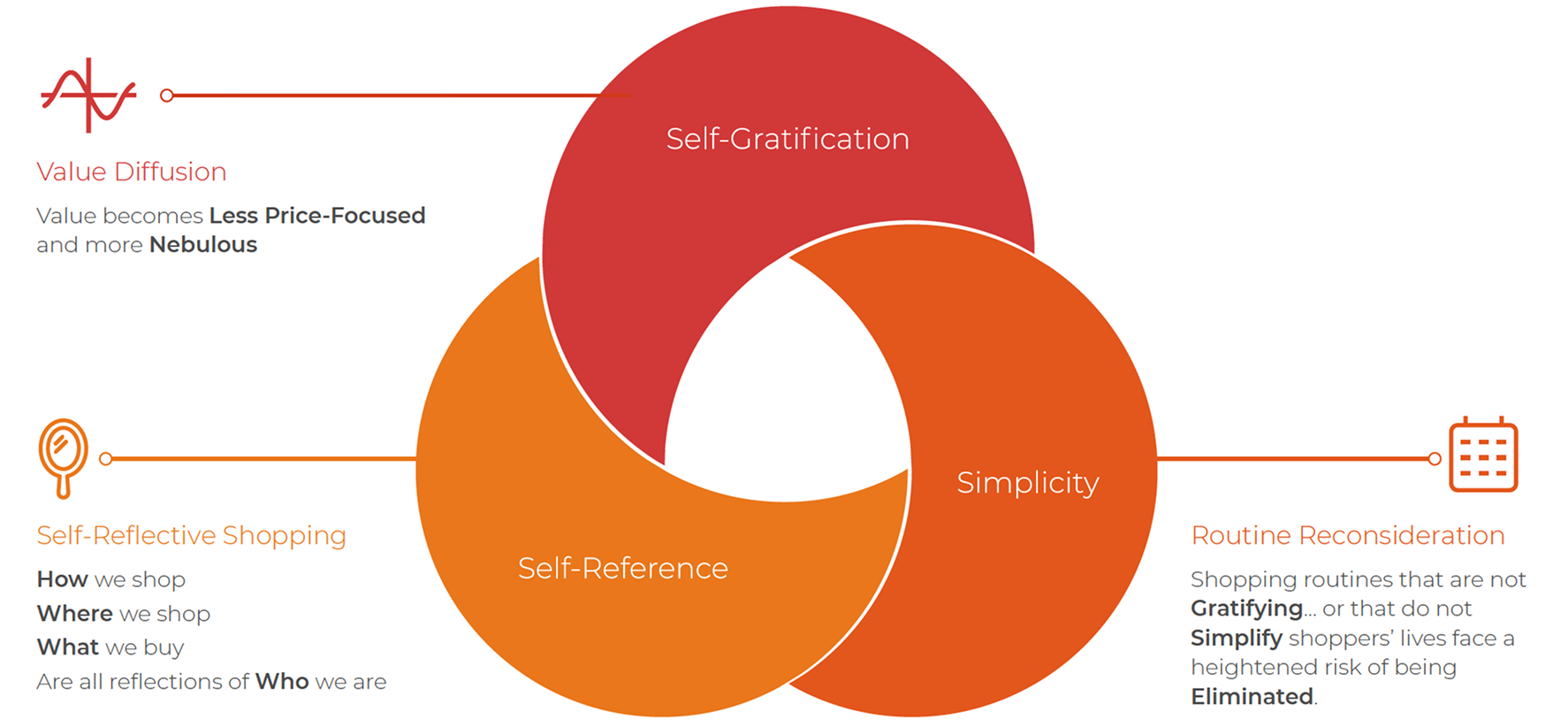
Source: Kantar Consulting
2 "A philosophy advanced by Epicurus in 307BCE that considered happiness, or the avoidance of pain and emotional disturbance, to be the highest good and that advocated the pursuit of pleasures that can be enjoyed in moderation.” Source: American Heritage® Dictionary of the English Language, Fifth Edition. Copyright © 2016 by Houghton Mifflin Harcourt Publishing Co.
The emergence of the Epicurean Shopper is a result of his or her ability to make choices based on self-gratification and simplicity. eCommerce, along with affordable luxury, has created the means of enabling both.
The emergence of the Epicurean shopper is changing the definition of Value from a simple price message to something more nuanced and complex. Routine shopping is not gratifying, and increasingly it will be eliminated or automated. Therefore, a shopping environment that is entirely predictable is one that is at risk, putting future shoppers at odds with most of the operational certainties that make a traditional store more efficient and thus profitable.
Plan for an emerging gap between shopper expectations of simply finding and buying items (replenishment purchasing) versus shopping — the latter will be increasingly experiential, providing an element of inspiration and discovery.
The separation of replenishment (needs) and discovery (wants) will be driven by technology and the free-flow of information along with fulfillment options. eCommerce has also allowed individual “upstart” brands to interrupt, often disrupt, the purchase process with offers that create frictionless purchasing for something new and interesting, bypassing much of the logistical costs of gaining distribution.
With eCommerce, products can be bundled into groups, reflective of individual preferences, and responsive to demonstrated purchase behavior at the shopper level. For example, Stitch Fix, Chosen Foods, and NatureBox come to mind — as do private label and retailer ‘own label’ expansions into new categories. The rise of brands provided by Aldi and Lidl in the US market show the future direction of own label development into more Epicurean themes, running parallel with retailers’ need to constantly renew the offer and refresh the shopping experience.
Changes to Shopping Behavior Involving Online Shopping (among all primary household shoppers)
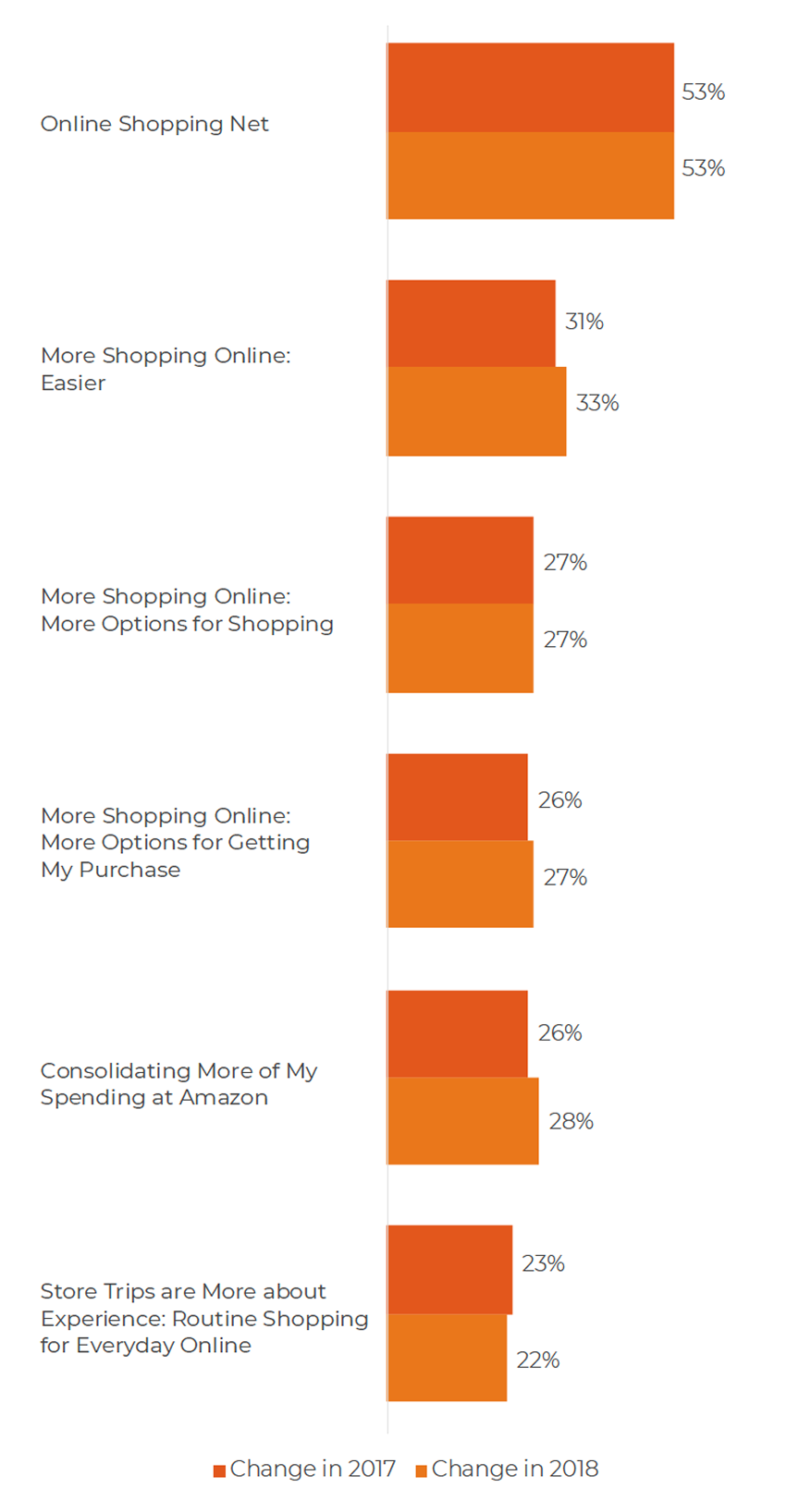
ShopperScape®³ data demonstrates that more than half of all shoppers, regardless of age or other circumstances, are now purchasing at least some of their consumer goods online while lowering their stated needs related to ‘routine’ shopping.
Source: Kantar Consulting.
3 ShopperScape is Kantar Consulting’s proprietary online survey of more than 4,000 primary household shoppers each month. Covering 200+ retail banners, this comprehensive survey provides timely data on retailers shopped, products purchased, spending outlook and shopper attitudes. For more information, go to https://www.kantarretailiq.com/shopperinsights/shopperinsightshome.aspx
Today, cohorts in which this dynamic is increasing are those initially hesitant—e.g., older shoppers, households without children, and less affluent “have not” shoppers. ShopperScape data analysis shows increased adoption of online purchasing across many product categories, and is expanding into travel, banking, and telecommunications—suggesting that online purchasing is now an absolute requirement.
In parallel, note that some things remain true no matter how much changes around us: a store near home is still more accessible than one farther away. A store that contains most of what a shopper wants to purchase is far more convenient than making multiple trips to multiple stores. A clean store featuring clear signage that makes it easy to navigate is more attractive than one without such guidance. Even here, changes in traditional retail are already emerging, mostly defined by evolving shopper preferences.
Fragmentation, referenced earlier as a driver of the Epicurean shopper, is the growing challenge for retailers. Fragmentation manifests in the store in nearly limitless individual taste preferences, fueled by bifurcation in incomes, age cohort attitudes, and increasingly diverse cuisine preferences. The shopper landscape today is dynamic and wildly variable—often at odds with traditional (homogenous) consumer blocks viewed as the “consumer target” or “core shopper.” The notion of monolithic targets, averages, and predictable behaviors is not only inaccurate, it inevitably marginalizes the products or retailing offer based on the narrowing or filtering process. For legacy retail formats, outdated methods of targeting “mass consumers” pose both a physical and virtual challenge of adapting the shopping space to a more selective, individualized shopper base that does not lend itself to mass marketing and chain-wide merchandising.
Shopper fragmentation may be the most challenging of trends, simply because it cuts against the existing metrics of efficiency for most retailers and suppliers of fast moving consumer goods (FMCG), including supermarkets and mass merchants with competitive offers. For nearly a century, the grocery store has been designed to appeal to the greatest number of people, attempting to satisfy all sorts of trips, tastes, and preferences for all possible shopper cohorts within the trade area, well supported by brands of national focus with broad acceptance.
Wegman’s Roanoke, VA store map shows the high-end experience food court, perishables, and food solutions of the store on the right separated from the price-sensitive and lower experiential ‘center store’ to the left. The combination captures a wider range of shoppers. Source: Wegman’s via Roanoke Times (November 2016).
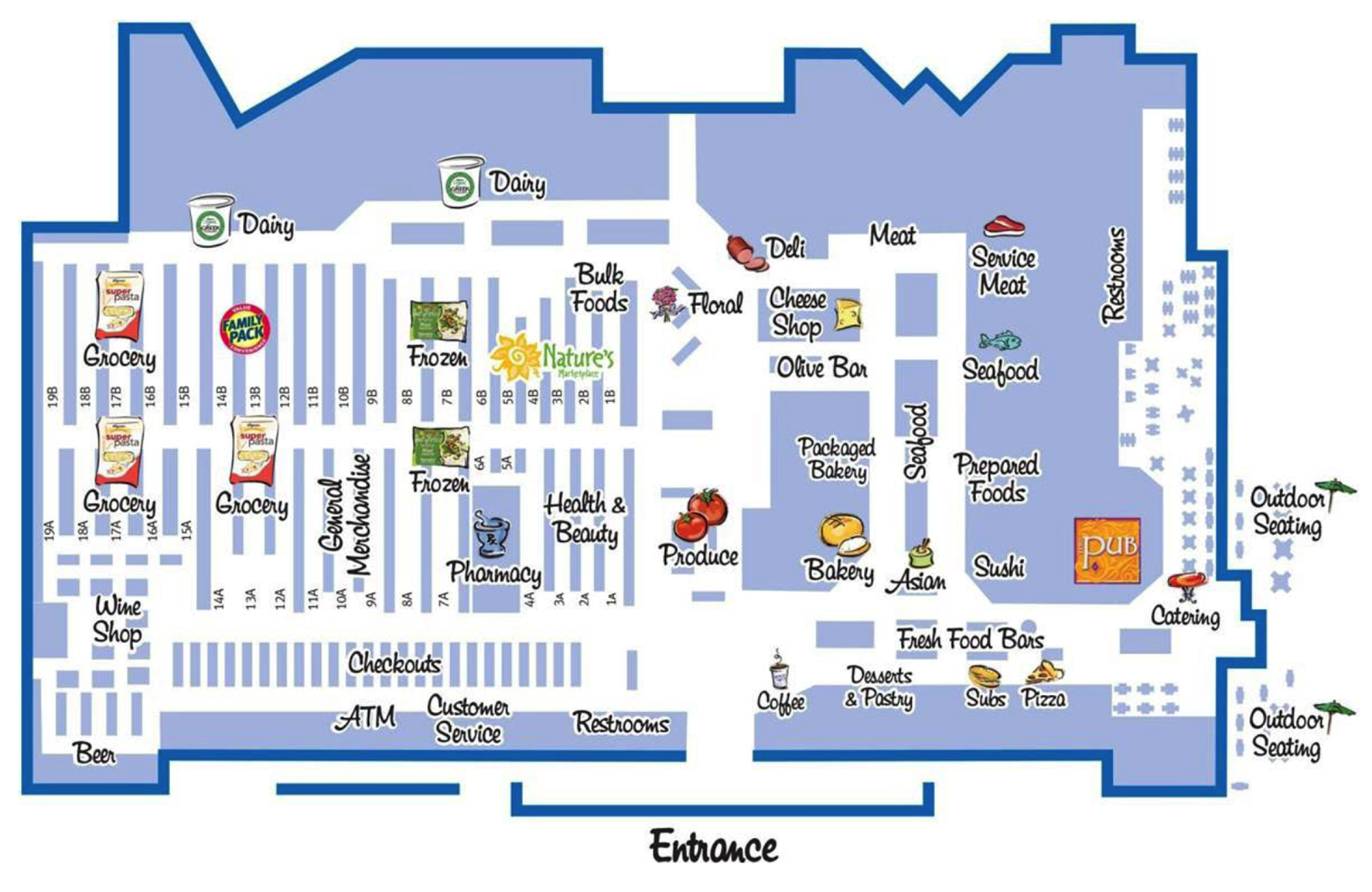
Shoppers Who Rate Factor as "Extremely Important" When Shopping for Groceries

Note: Arrows indicate statisitically significant year-to-year difference (95% Confidence Level). ShopperScape© data shows a consistent shift upward over concerns related to friction and time — including the convenience of the location (which increasingly is online as well as in-store), ease of finding desired products, and the ability to complete shopping in one place and time. Source: Kantar Consulting
One solution to fragmentation was the hybrid grocery store, depicted in the Wegman’s format on the prior page. This format provides for enhanced shopper experiences (mostly tied to the perimeter) along with a cost-sensitive center-store environment. Wegman’s and Loblaws provide strong examples of this approach. In the future, we expect the “cost-sensitive space” of center store to shift progressively (for the shopper) over to a growing number of online replenishment options. The business challenge remains: Can the retailer capture those shifting sales within its own omnichannel operations? The reward and risk are significant in capturing replenishment sales while preventing leakage from other departments.
The Hybrid Store solution will continue, but with the virtual focused on replenishment while the center store becomes increasingly focused on an improved experience.
Shoppers today are clearly showing the way to the future they want. They are empowered and determined to compare items, relevant reviews, pricing, features, and availability using technology that will quickly shift from handheld devices to more pervasive access. Those same shoppers are already in “conversation” with marketing messages about stores, products, and categories that are almost wholly independent of the supplier and retailer role. Individual contributors to blogs and in-site comments, third-party review organizations along with greatly enhanced soft information (e.g., industry or consumer rumors) may well be based on opinions and not usage, much less purchase. Retailers attempting to use this greater sphere of marketing-message influencers do so today with caution; yet, in the future, it may be the only effective means of marketing to an information-driven shopper.
The commonality across all shoppers is to avoid friction such as that caused by fruitless searches, finding information when desired, affordability of selections, safety concerns, and payments. All retailers today and in the future are concerned with these factors but need the ability to create some friction (or slowing) to get the customer to consider new products, be influenced by merchandising, and marketing—regardless of being online, in-store, or in various combinations. In the future, shoppers will expect consistent messaging and frictionless purchasing across any routes of shopping; all the while, retailers will be learning from the endless data streams available to eliminate friction or the number of interruptions to make for a more profitable shopping trip.
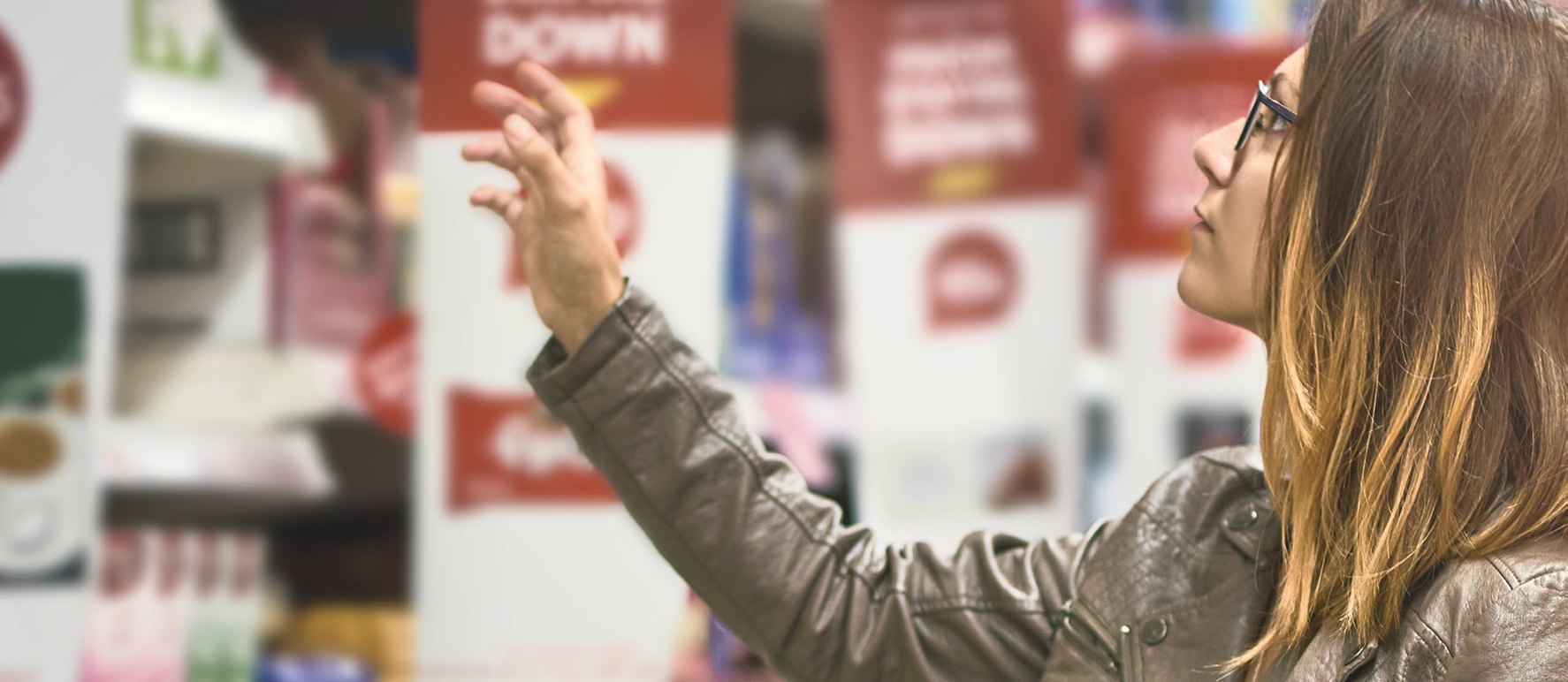
The Shopper in the Center Store
The shopper continues to show a marked and growing preference for the perimeter, and far less interest in the center of the store. In 2011, 49% of shoppers reported using the center store and perimeter equally; by 2018 that has dropped to 40%. Nearly 4 of every 10 shoppers to conventional grocery stores today shop the perimeter exclusively. This has enormous implications, not just for store design, but for the operating business model of the store. In the current state, the seemingly endless proliferation of items available across categories has crowded the space and made item selection difficult, sometimes beyond the capacity of most shoppers to navigate.
While producing enormous financial incentives for retailers, having endless choice and full aisles of comparable products are no longer a positive aspect for shoppers overall. This strategy also creates an operational burden for inventory. While category managers work within each section to authorize and stock the most popular items, this creates the effect of “sameness” across all stores in the same area. The other problem is that unique items struggle to be noticed, unless they’re heavily supported at launch.
Just as retailers must contend with a more complex marketing environment, many manufacturers also struggle to compete for consumer attention in a world of new media channels and modes. They struggle to find growth in this “information overload” environment. Many supplier companies default to what they know how to do best: line extensions and packaging variations. These are low risk but do little to generate absolute growth or new shopper trips to retail.
% of Shoppers Who Shop Perimeter Departments and Center Store Equally

% of Shoppers Who Go up and down Every/Almost Every Center Store Aisle

37% of Shoppers Primarily & Exclusively Shop the Perimeter
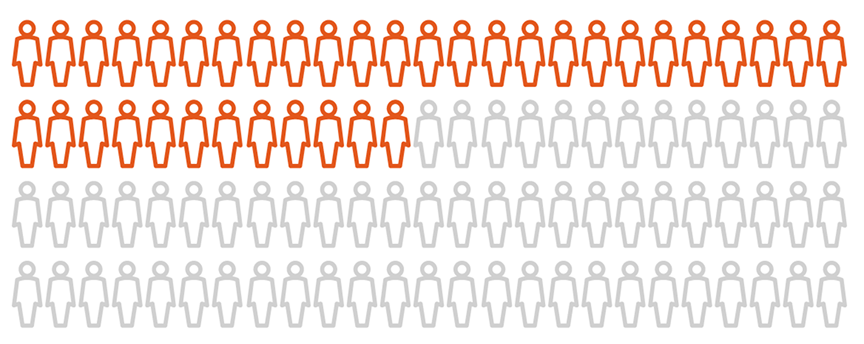
ShopperScape data shows the shift of shoppers not only to the perimeter but as the primary area of solutions being sought.
Source: Kantar Consulting
Aldi (top) and Lidl (bottom) present an upscale store experience and innovative own label products with discount pricing. Source: Kantar Consulting Store Tours
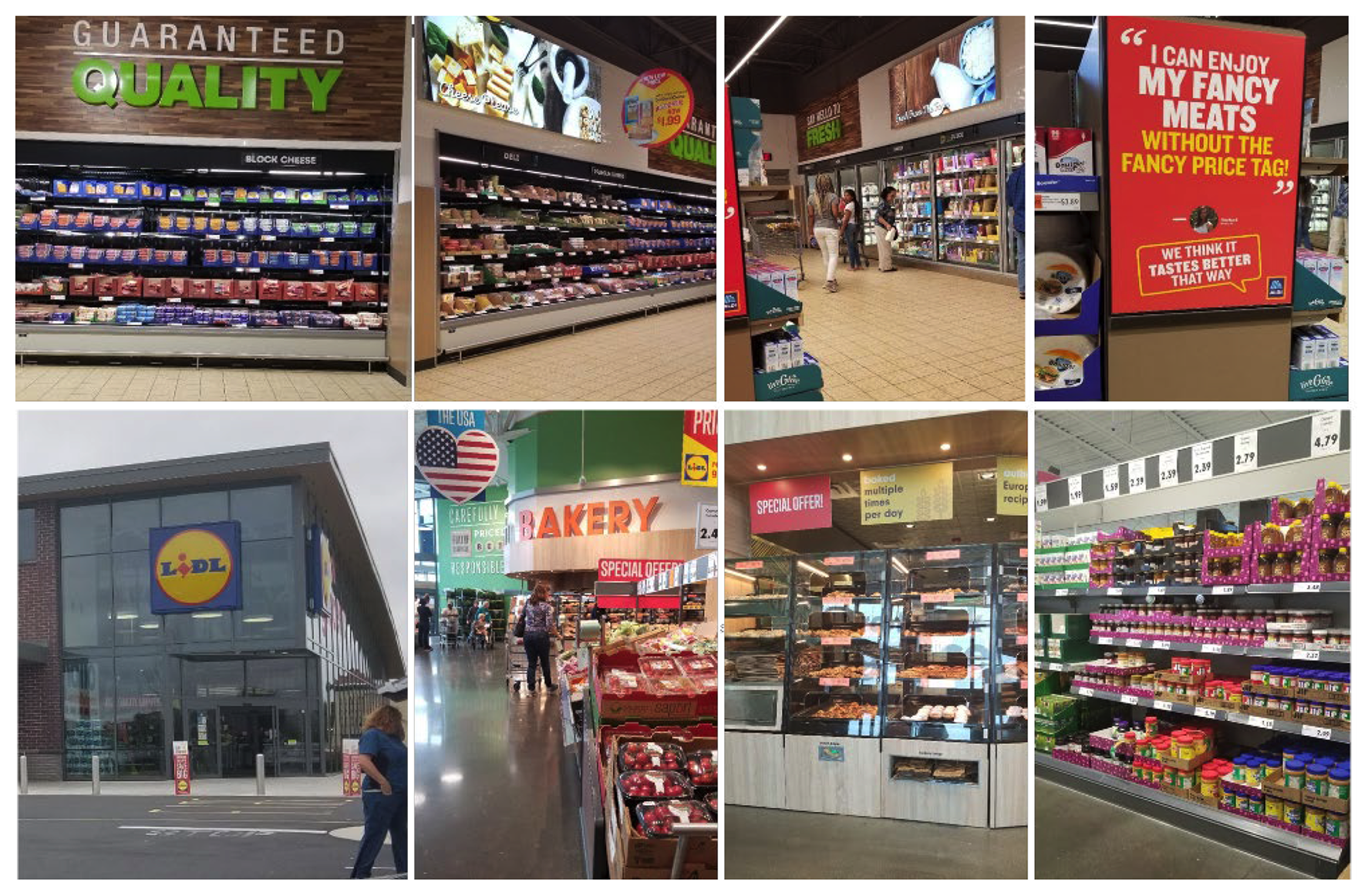
The Future Store will not be limited to physical and virtual space; it will also express value more dynamically via retailer ‘own label’ offerings.
Contrast this with Trader Joe’s, the Aldi-owned chain that has invested heavily in creating a brand that is deliberately quirky, based on limited inventory and regular product rotation, and majority private label. Many Trader Joe’s stores are deliberately laid out to surprise shoppers, with angled aisles that allow for meandering and discovery. Virtually every store has sampling stations with knowledgeable employees. The staff is very well trained, mostly full-time, and highly interactive with shoppers, even at checkout. Marketing and advertising are the retailer’s responsibility, executed for the store-as-a-brand. In many ways, Trader Joe’s is the anti-grocery store. The parent Aldi banner operates on a very similar business plan, just with a different price and value message. In both cases, the use of strong architectural and graphic elements along with innovative signage is creating a different center store (and total store) experience. So is the retailer’s use of own label to offer upscale product offerings to shoppers at discount prices.
The challenge is clear but immense: retailers need to move rapidly to optimize the store for a shopper who is now capable of creating his or her own expertise digitally—highly informed and individualized in behavior. This creates a set of demands on the store, ranging from employee capabilities to company requirements, as business transforms to become truly omnichannel.

The Building Blocks to the Future Shopper
Understanding the Future Shopper: Key Insights
The shopper and the store in a decade’s time will be shaped by the changes already underway today. But to establish how that future will interact requires moving to a stronger framework of common requirements. The key elements to guide how to build this mutual space can be summarized in the following future-focused insights model⁴:

Connections

Flow

Simplicity

Experiences
4 The Connections, Flow, Simplicity, and Experiences model appears courtesy of Kantar Consulting’s Futures Group.
Connections
Virtual, robotic, and augmented pets all are available today. In the future, they will become the shopper’s assistant—aiding in searches, interactions, and connecting to media and multiple-mode communications. The retailer should anticipate accommodating and enabling these ‘assistants’ when engaging with future shoppers.

Sources: Virtual Trends, Sony Corp, and The Imaginative Universal
Shopper needs are also evolving to enable more quality time with friends and family, deeper relationships with service providers, and community connections—mostly all of these needs are working “against” the isolating pressures of modern, hectic lifestyles. These emotionally oriented needs will continue to evolve as the digital world penetrates deeper into the every day. Relationships between individuals and their larger communities are under strain, with time increasingly dedicated to social media and apps that help foster interpersonal relationships. Moving forward, the virtual and physical will blur further as access to digital moves beyond computer interfaces and smart devices—virtual and augmented reality will be layering one on top of the other. For example, many shoppers will have a virtual pet via AI that only they can see; still others will be granted permission to shift electronic devices to augmented reality. It will be the roving interface of the shopper, shifting from real to virtual locations as the AI and shopper converse, even walking through a physical store.
In this new technology-rich world, retailers will need a great deal more expertise to understand the hybrid world of overlapping realities, learning how to insert themselves in relevant and appropriate ways—largely defined by the shopper and his or her digital assistant. Those retailers who insist on interruption rather than integration will be systematically removed from the decision set of the shopper. Greater opportunities for retailers will also emerge from radical changes to the catchment areas of physical stores—defined less by proximity, traffic, or geography, and more by crossing physical channels with virtual borders. Building and maintaining appropriate connections with shoppers will require seamless transactions and fulfillment, as well as integration into a larger web of day-to-day shopper interconnections.
Flow
“Flow” is a requirement that is raised in large part by a shopper’s increasingly complex life enabled by seamless connections. Pressures include time compression, the collapsing of work and personal time, demands for greater efficiency and flexibility, as well as accessibility of relevant products, services, and spaces. In part, this means coping with the new “normal”—i.e., constant change—by establishing an integrated view of how to integrate and sequence everything from meal planning to product prep and consumption. The risk for retailers is to have stressed, overwhelmed shoppers withdraw. So success in the future will require some controls and appropriate intelligence to help loyal shoppers manage the overall “flow,” making life work better.
Managing flow will optimize automated services like home (or workplace) delivery. Similar to a factory constantly improving just-in-time (JIT) processes, the home will review and improve on how to ensure that product and service need matches moment of use. For the retailer, this demand will require assessment of each shopper’s changing needs and purchasing patterns. Retailers who can become an integral part of the shopper’s lifestyle will maintain competitive advantage.
Optimizing “flow” requires intelligent sequencing of decisions and events to handle future complexity, basically making life work better for the shopper.
Simplicity
Shoppers in the future will continue to seek ways to minimize the growing complexity of modern life, making decisions less taxing and finding solutions that can anticipate needs rather than respond to them. Product curation is often suggested as a solution, but retailers will need to master far more than individual preferences and product matching. As noted earlier, life will be managed within the complications of layers of reality—aided by digital assistants, AI, and virtual reality. Thus, human decision-making will ebb and flow. Simplicity will thus be achieved by effectively managing all of these nuances.
Identifying low awareness with repetitive need purchases (via monitoring usage and need) will help automate a purchase, aided by flow management. Many products and services will thus shift to a direct-to-consumer (D2C) model, entirely bypassing the retailer. For higher-level awareness situations, such as a birthday or return from vacation, the retailer will offer up the right set of product selections. For product trialing or new experiences, some shoppers will select a specific retailer due to that retailer’s “own label” expertise, further simplifying the shopper’s life—as the retailer will make relevant selections.
Identification via individuals’ unique gestures and body movements is already in use with areas requiring strict verification for access. The top graphic is a hand movement analysis that tracks movement through time and space to establish a unique pattern. At bottom, FST21 runs a visual evaluation of 12 points of the body moving toward a camera. The result for the retailer and shopper is a simplified identification process.

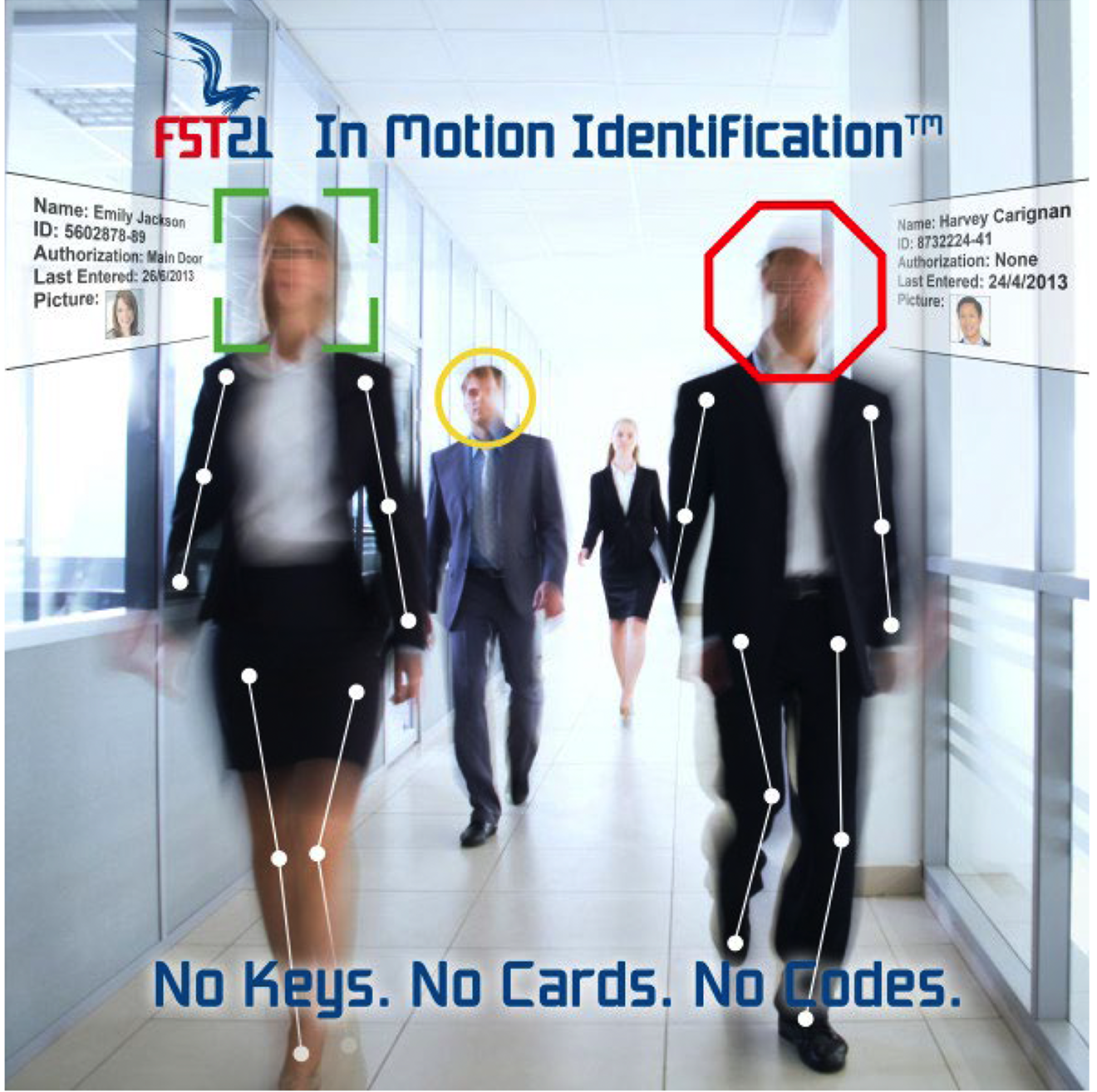
Source: Manomotion, FST21
Experiences
Alibaba’s approach to 11.11 “Singles Day” event continues to broaden into a wide range of integrated online, in-store, and in-mall events that are intended to keep the shopper engaged during the full event. From left to right, major events with group gaming and countdown clocks, smart device augmented apps from seeking and ‘capturing’ elusive branded characters to be redeemed for free goods, as well as major malls covered in clear LED panels streaming media and messages that can be seen across the whole of a city.
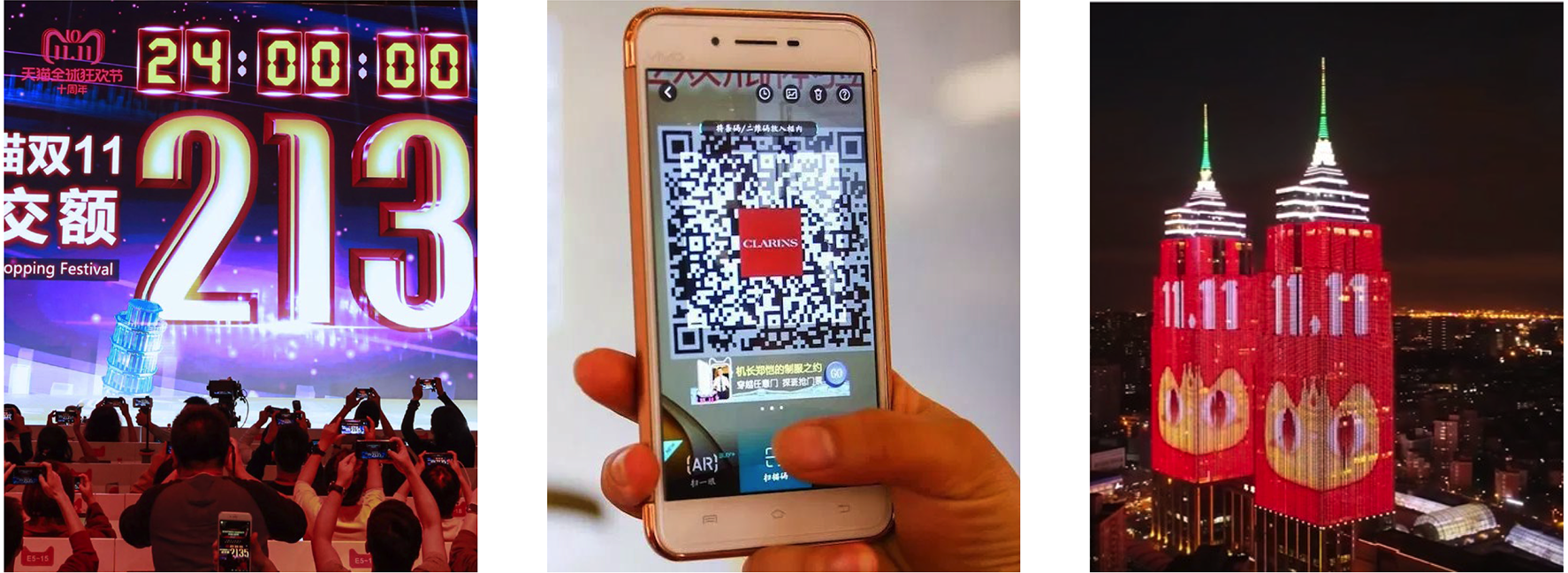
Source: Alizila.com
Today’s Epicurean shopper already expects the store to provide relevant content, curated products, and solutions to suit the experience. What was delightful and amazing last week becomes more routine, more of a background to the shopping experience. The same will be true in their lives as shoppers seek out new experiences stretching across multiple media, virtual reality, and transportation options. Note that experience is not always focused on delight. Public transit, for example, is now expected not only to be clean and on-time, but also efficient at communicating delays, offering updates anywhere the user may look — digital signage, smartphone apps, etc. Technology deployed in cars allows a car to take control from a human operator to avoid a mishap — while also suggesting optimal route guidance, food selections, and nearby entertainment options. Airlines prompt the traveler to change trip details based on rapid shifts in weather and aircraft availability. These changes rapidly become the norm for consumers. Similarly, retailers will generate content focusing on how to make today’s shopping enhancements fresh, new, and relevant to a shopper’s movement and specific place.
All of these shifting expectations will challenge retail planning. Eliminating the negatives will be the baseline for that assessment, and investment for monitoring store conditions, product availability, and employee positioning. But the positives will be harder to achieve since retailers are competing not only against each other but also with so many other touchpoints of individual shopper’s lives. Stores will rely on digital integration — for example, deploying media across whole walls that can stream media, change colors, and shift messages to individual shoppers'. Small sound zones will combine music and messaging to fit the mood, but not overwhelm or distract. Stores will constantly work to improve the environment to provide new, inspiring, and customized-to-the-shopper experiences.
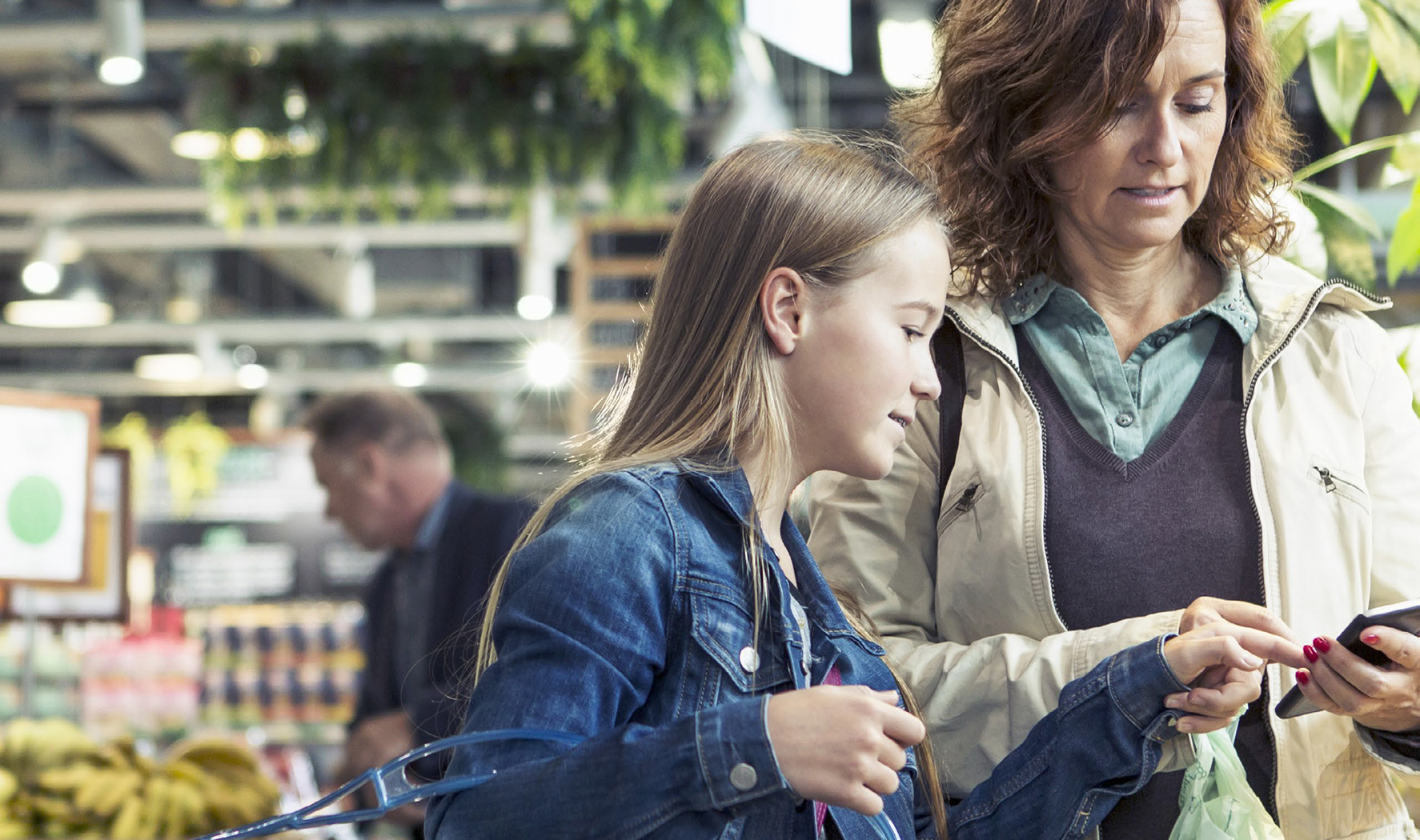
The Components of Expertise
Core Tools for Future Expertise
Mobile Technology
Conventional retailers have been challenged by the availability of information provided by mobile devices and the smartphone. Mobile changes the way shoppers behave, with access to nearly limitless information on demand. Traditional mass-market advertising media continue to lose impact. Shoppers do still visit stores to educate themselves on products, browse merchandise, or find inspiration for their purchases. But, in parallel, they can access a staggering amount of useful knowledge in aisle, or even lose their focus completely. Employees often respond to a shopper query by running their own data searches independent of the internal support provided by retailer systems. This parallel activity will likely expand beyond the handheld; the open question is how that will function in shopper and store employee routines.
Payment management, banking, and transactions continue to expand into mobile, though in the US this is happening at slower rates than in Europe or Asia. The expectation is that like travelers transacting with airlines and hotels, shoppers will be forced into greater use of cashless payments. This is a change already occurring with smaller retailers and online players that have opened stores such as Amazon in the US where entry is denied to those not able to accomplish mobile transactions. Experimentation is now capturing gestures, voice, and facial recognition as a means of seamless transaction, some of which will likely surpass mobile technology over the next decade.
Once friction is removed from the payment experience, making it seamless to the received value, then price sensitivity is likely to be reduced.
There are clear benefits for retailers and shoppers: the shopper no longer must pause to pay while the retailer has greater security and less time in managing cash and checks. Another benefit will be a reduction in price sensitivity as the shopper no longer gives as much thought to the actual cost of the experience. Early evidence with ride-sharing applications shows this shift — the focus of the user is on ease and speed, much less on price. However, retailers must also contend with the fact that not all shoppers have access to credit and debit cards. Currently in the US, almost 25% of the population lacks a debit or credit card. How this translates into future retailing is of high interest but remains difficult to project — given variations such as lower income shoppers’ access to financial services, or broader fluctuations in discretionary spend during recessions or general budget-tightening trends.
At the same time, new opportunities are surfacing to leverage mobile technology. Geo-fencing, using GPS, RFID, or NFC can enable the store to interact with the shopper, triggering prompts, information, and in-store guidance. Done carefully, it allows the retailer to identify a shopper and drive appropriate messaging and responsiveness. Done poorly, it has risks of alienating shoppers who are already overloaded with marketing and leery of “Big Brother”-style privacy concerns.
A collection of cashier-less stores: top left is Amazon Go with a core mission of enabling shoppers to walk in (by scanning a smartphone with the app) and walk out with all purchases being recorded seamlessly. The upper right shows Bingo Box in China with a far smaller kiosk that allows the shopper to self-scan purchases which are visually verified on departure. The bottom photo shows a hybrid 7-Eleven in Taiwan with app scanning gates to allow the shopper into the store with the expectation of self-scanning.
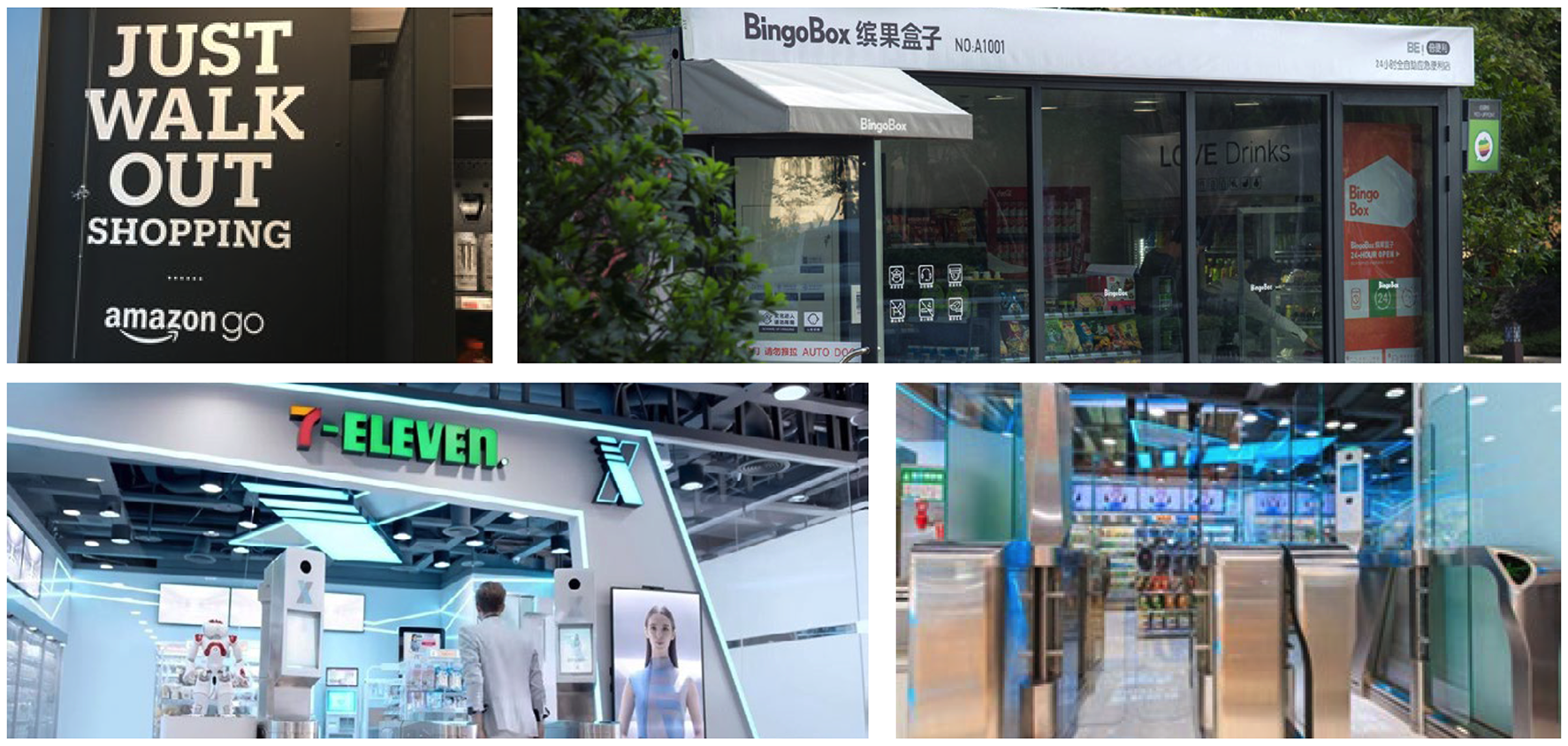
Source: Kantar Consulting and Seven
Evolving Impact of Apps and Voice
Leveraging apps to aid the shopping experience is commonplace today. Apps integrate online shopping; provide in-store navigation; offer pricing guidance, reviews, blogs; and enable payment transactions and a multitude of fulfillment options. With a self-contained app, it can be easily updated and managed by the retailer (or third party) right on the shopper’s mobile device. Current challenges must be resolved prior to projecting this one-store retail solution to the future, not least of which is the stability and predictability of secure functions. In both instances a single failure usually results in the shopper stopping use of the app. Another risk involves overreach, i.e., piling on too many functions and behind-the-scenes tapping of data generation. An app that is constantly geo-locating and transmitting data (often not related to the retailer but for third party use) will slow the smart device and drain batteries. We expect that in the future, power issues will be resolved along with the need to manage multiple devices; nonetheless, retailers must focus first and foremost on the value the app can provide to the shopper.
Improvements in PCs, laptops, even automobile interfaces toward app-enablement has made this a perfect solution for retailers to provide “whole life” value, delivered across any platform the shopper uses going forward. And the ability of the app to sync with prior actions on all devices removes another form of friction and frustration for the shopper. However, in the future the requirement that the app be fail-safe expands considerably and will need to be reflected in long-term planning and system-wide risk mitigation.
Voice clearly opens greater potential for mobile technologies but future changes will make it far more so. Today, voice technology is still stuck in the ‘command and respond’ pattern modeled after call-center automation. The inclusion of chestnuts — i.e., somewhat random and neutral statements to indicate conversation — has helped, but at the core the function is still about making a request to be acted on. A true conversation capability is only now emerging in a few instances such as those associated with the Google cloud of solutions that include on-the-fly translation services. Ordering a product is a fairly direct though often frustrating voice activity. Merchandising and selling with voice requires a complete elimination of that frustration. That requires a natural give and take between the AI managing the conversation with the shopper to get to a positive outcome, even if only improving the shopper’s attitude toward using voice over time.
Voice will become far more effective once it can engage conversation with a recognizable personality.
For visual and audio interaction with shoppers and employees, the addition of a ‘personality’ to voice technology will optimize engagement levels. Interactive conversations providing tonality and emotional change are far more effective than the current flat and predictable sentences used by today’s voice-enabled devices. Standing in the meat department may generate a conversation with a TV chef’s voice discussing different options for dinner along with considerations for side courses. Or, shoppers will be able to engage a known brand spokesperson in the aisle. The interest of celebrities to license their voice reflects this reality, as does the interest of media companies to create new computer-generated voices. All of this technology today still requires a smart device. In the future, voice activation and engagement will involve various fixtures, localized sound cones, or other micro-focused discussion tools — enabling technology for most of this is already in use today. Avatars appearing on a flat surface or VR interface to provide visual cues to the conversation will also be deployed.
Voice as a means of two-way notifications and queries via an in-ear device will be common in the future. Speaking to a device has become a normal activity today; but newly evolving AI programs can finish sentences from spoken fragments — requiring fewer spoken words to convey meaning. A similar evolution has occurred with GPS-enabled mapping apps in which users rely almost entirely on the voice function to make changes to travel routes. In retail, we can expect the use of cues and alerts from store-centric AI functions. For example, a manager could be alerted via an earpiece or nearby vibrating surface to an impending failure in refrigeration, a lost child, an unresolved labor concern, or changes to a shopper’s product preferences.
Voice will become far more effective once it can engage conversation with a recognizable personality.

Logistics that Shrink Time and Space
Over the past few years, Amazon has set a standard for home delivery that most retailers are still unable to match, and those offering such services today are certainly struggling to do so profitably. Expectations have already shifted from two-day shipping to two-hour fulfillment in a growing number of major metro areas across the US. Evolving standards create greater pressure to compete: shoppers are no longer willing or required to make tradeoffs between fast, free, and convenient delivery.
Though the grocery industry has had functional models such as Peapod in place for quite some time, the shakeout of companies in the late 1990s such as Webvan, ShopLink, and others deterred most companies from investing and learning from these models. Now they are forced to make a choice between building infrastructure that enables efficient delivery or looking externally for ways (and partners) to fill the hole in these capabilities. Partnering with third-party and app-based delivery services is a quick answer for some but may not be sustainable in the long run. Third-party agreements also leave the retailer dependent on an external brand, and can disconnect the retailer from the shopper during fulfillment. Those looking to make changes organically must invest heavily to transform their legacy systems. To date, in-store pick-up has been the more cost-effective option for existing retailers and is increasingly favored by shoppers.
In-store pickup has the advantage of leveraging existing assets but is not without multiple challenges. As in-store pickup gains popularity, retailers are now looking for more ways to speed the process, move shoppers through the store faster, and ease the pain of return logistics. While digital sales grow, the role of the store is evolving as well, integral to addressing all of these related issues. Too often inventory at store level is not well integrated or suited to manage the volume, and the picking process is just as labor intensive for employees as it is for shoppers — while adding costs.
ShopperScape® data shows that shoppers identify key parts of the shopping trip that can be resolved with tools that reduce friction. Delivery and Pickup lead here. Source: Kantar Consulting and ShopperScape, February 2018.
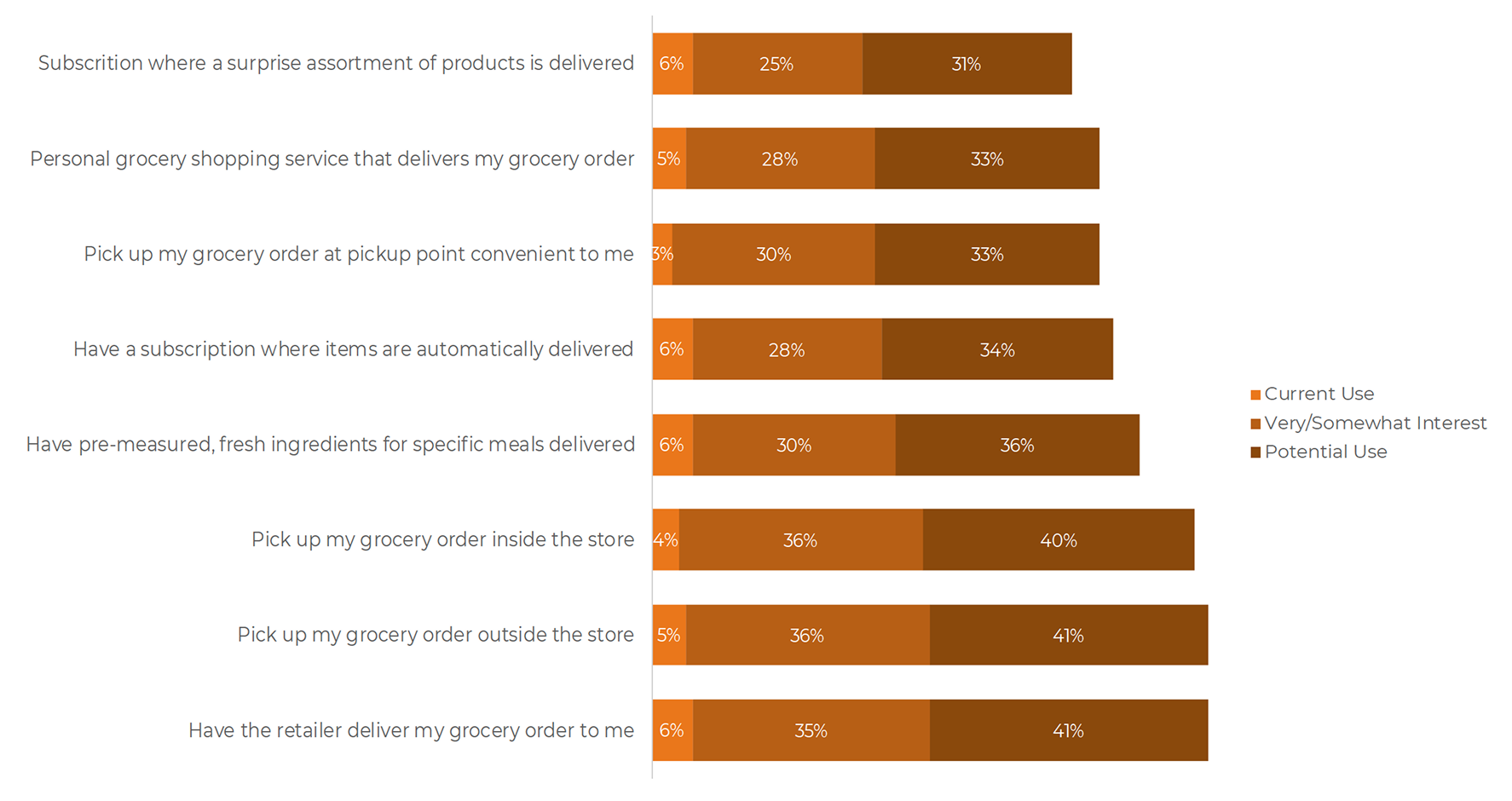
Source: Kantar Consulting and ShopperScape, February 2018.
Kroger, the largest traditional supermarket chain in the US today, appears to be trying a bit of everything, making initial investments to assess what may have long-term viability. Such initiatives include Kroger Restock, Kroger Ship, Kroger Pickup, Instacart, an international agreement with Alibaba, an agreement with Ocado to develop improved systems, and — perhaps most interesting for the long term — the testing of a new self-delivering grocery service, combining robot technology from Nuro with Kroger’s grocery products, enabling goods to be curb-delivered via automated robots.
Kroger is clearly willing to devote resources to experimentation without absolute certainty of what the future outcome may be, a mindset that may be of more value than the specific programs being tested today.
Existing legacy systems will not suffice, if only because Amazon continues to raise the bar, and other retailers including Walmart are responding. Shopper expectations continue to evolve as well. The continued struggle is to reconcile in-store inventory draws for online orders without compromising automated replenishment systems. The future store will solve most of these issues with considerably more integration into shoppers’ homes and mobile lives, along with solutions for treating all inventory within the retailer as one object, extended outward into third-party distribution as part of a newer, larger pool of available product.
Regardless of the means of fulfillment — whether pick-up, delivery, third party, or spread across multiple routes to the shopper — the assets of the store will need to operate in parallel so that the system can fulfill any and all shopper requirements. Consolidation of orders from multiple suppliers into the home will be the standard within these stores. Achieving that standard will be easier with forecasting based on deep knowledge of individual shopper habits and needs over the longer term, either directly with the shopper or through advanced use of segmentation, leveraging an optimized range of shopper profiles.
Amazon clearly is an influencer and has been investing into logistic assets beyond leveraging existing services. These include seaboard and rail consolidation for cross-border fulfillment, dedicated transportation and delivery via air and ground vehicles, along with continued exploration of alternative placement of smaller fulfillment centers in population centers. In ten years, autonomous vehicles’ dependability and safety are likely to be resolved, expanding the portfolio of fulfillment options. In all of these areas, it is better for retailers to be fast-followers of proven solutions than to invest at levels requiring significant financial risk.
Warehousing and Distribution
In Ocado’s newest distribution center (being built in the UK), all containers operate on a grid via bots. The bots collaborate to retrieve bins and deliver them to a station as quickly as possible. This allows an entire online grocery order to be picked in about 15 minutes (compared with two to three hours in previous DCs).
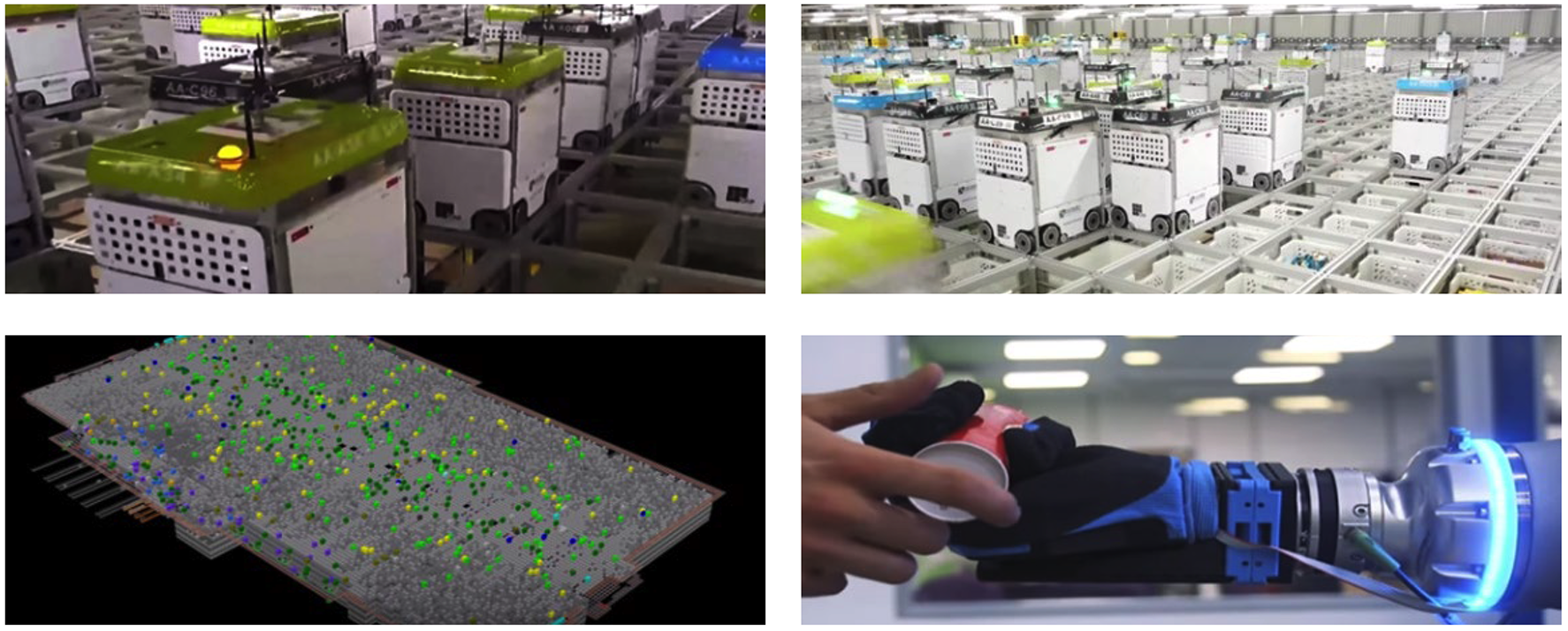
Source: Kantar Consulting, Ocado Investor Website
Technology and logistics capabilities will inevitably move farther upstream than the store itself. Several US grocery retailers are investing to build out online grocery supply chain capabilities. As noted earlier, Kroger is looking to British expert Ocado to help build out a first-party online grocery distribution center in the US. In the future, this new distribution model will enable Kroger to be far more in reach of its shoppers’ homes.
The warehouse of the future will be a heavily automated function for distributors and retailers that continue to replace traditional movement processes with in-place robotic arms and pallet shifters. Amazon’s Kiva has shown that relatively simple mechanical robots can be used to constantly optimize the motion and stationing of product within the warehouse. It also shows the ongoing development of human-robotic joint environments creating far greater productive models. This whole environment will be complex, but also data-rich — generating information to optimize the flow of assets. For example, the traffic lanes of goods to shopping may be slowed on a random basis by a robot moving a set of shelves to a worker at a critical moment, or the robot being replaced by an employee who can judge the timing better.
Warehouse and distribution will be part of a ‘whole’ that integrates the store and the shopper, and can anticipate the changing needs of each.
In the future, the store will have these capabilities and will become expert at handling not only product but also fixed merchandising and gondolas. Moving the breakfast convenience area to the front of the store based on prior demand and traffic history and changes outside of the store (weather, traffic) offer some simple illustrations. Shifting deliveries in mid-fulfillment based on data related to store conditions, employee activities, and shopper need sequencing becomes a normal part of operations. In short, the store of the future will be flexible, faster, and much smarter overall.

Automation and AI Create the Smart Space
Automation, when functioning as designed, is nearly invisible — but is neither simple nor linear in execution. The supply chain is a good example of how automation has become a complex series of actions that are recorded as transactions (the loading of a truck), signals (a message that the loading is done), and response (confirming the truck has left the warehouse). The greater the volume and quality of data being moved, the lower the costs incurred. Such a system also brings increased reliability of predictions, like being in-stock. Automation brings ongoing improvements, and the addition of AI means that the whole signal-and-response process now links to a range of additional variables.
In simple terms, AI describes leveraging the speed of computing to assess the statistical relationships in data. In business terms, AI describes a system that is actively assessing the relationships of disparate data sets to better understand results.
The above example of supply chain automation involving the loading truck expands with AI into a far richer approach to improving results. With AI, a truck arriving on time for a store delivery becomes a factor of the driver’s history, the condition of the truck, the manner it was loaded, variable traffic along driving routes, road conditions, weather changes, and legal requirements for distances traveled, including mandatory driver rest periods. It can also include the days the driver has been on the road, ongoing third-party disputes, and witnessing accidents along the route. Each of those variables has captured data that has a statistical impact on the desired outcome: an on-time and safe delivery. That data is also highly dynamic, changing over time and circumstance to which AI is constantly reevaluating and trying to expand into other relevant information that may help to further refine assessments. This activity is often stated as ‘machine learning’ in the trade press — and it does have some parallels to how humans process and learn from circumstances.
Enabled by smart technology and AI, the store of the future becomes an active rather than a passive operating environment.
In the future, AI will enable far faster rates for data gathering, access to broader data groups, and ever improving software to create scenarios based on relevant results. And, more often than not, that selection process will also be handled almost entirely by AI.
The Smart Store
The smart store will recognize the shopper at the entrance, or even better, outside the store using behavior movements signaling intent to enter the store. Recognition software for vehicles is already in place, and facial recognition is now hitting its stride with increasing reliability. It is perfectly feasible for the store to recognize repeat shoppers and link to their purchase history or preferences, to classify the type of trip they are on based on their movement and interaction with merchandise. The technology already exists to recognize a shopper’s emotional state via types of movement and expressions as they move through the store, leading to opportunities to expose the shopper to products of interest or head-off potential negative issues that might be arising, such as waiting too long for services, frustration due to not finding an item, or even searching for a lost child. The shopper’s experience can be personalized to some extent: for example, the embedded screen in the specialty cheese case “knows” he or she likes bold-tasting cheeses, the deli case “remembers” a preference for smoked turkey and might suggest another item with a strong affinity such as Swiss cheese, the floral department can issue a friendly reminder of important dates (tomorrow is your anniversary), and make recommendations to types of arrangements along with when and where to deliver at the optimal time during the day. And, of course, the store knows the shoppers’ financial information, assuring a pain-free and convenient checkout experience. There is already a practical record of success in upselling and extending service offers while in store, which is a natural extension of “smart store” interaction with shoppers. Three variables determine how this will work for the shopper and the store:
- Speed: Shopper-facing AI is less about novelty and more about convenience. AI should be employed when it can handle shopper issues faster or more reliably than feasible alternatives.
- Mobility: Consider how your customers will engage with AI and whether fixed in-store points of interaction can fulfill shopper needs or if mobile options such as robots or AI smartphone integration make sense.
- Integration: Make sure that AI systems have live access to the latest in-store data (e.g., inventory) as well as ensuring that employees can access AI conversations to smooth transitions from AI-to-human over to human-to-human engagement as needed.
The Smart Home
Samsung “Smart Home” takes advantage of the broad portfolio of home, computing, and media products that are now integration-enabled. The company sees the kitchen as the center of home activity and communication so has placed the primary point of engagement in the refrigerator. The interface can stream media, act as a touchscreen input, or be voice-enabled via Samsung’s “Bixby” AI app.

Source: Samsung
Today the Smart Home is an integration of a smartphone with several in-home devices. The doorbell is also a video monitor, the thermostat can be programmed, and music can be selected and played via the phone. This integration now syncs to voice commands on Amazon Alexa and Google Home, but in most instances home devices are managed via smartphone. What all these actions have in common is a 1:1 set of actions triggered by the user. Few if any of the in-home appliances or devices communicate or respond to each other though they often have some (limited) capability to do so.
The model that’s emerging focuses on protecting and serving those residing within the home. This requires linking all occupants to the surrounding monitoring and evaluation tools — enabling the system to act proactively and evolving from today’s “command and respond” model. First-mover companies working in this arena focus on home security, motion and sound detection, fire and gas alarms, heat sensors, and entry alerts. Integrating and using them as a single system requires a software solution; speed of improvement has become a competitive issue with most providers moving to independent cell and power systems. So it is the integrated home, not the smart device, that is managing appliances, lighting, climate controls, and media either on command or in reaction to members returning home, or lowering the heat when there are more people than normal in the house.
Clearly there will be legal guidelines and requirements to what shopper information will be considered private and not for access. In this instance it may be a store query to the bank as to the credit limits available as opposed to actual balances on-hand.
Retailers and manufacturers alike have recognized this opportunity. Many are studying how to enable the integrated home while managing the flow of requests and data resulting from it. Samsung, as mentioned earlier, has been steadily enhancing its devices to interact and communicate with each other focusing on the kitchen as the hub of at-home activity and live conversation. Thus, the system’s primary touchscreen is installed on the refrigerator door. In turn, Home Depot and Lowes have created variations of the “total home” integrated solution. Some believe the most useful aspect of in-home integration is remote monitoring of aging family members who lack a nearby helper; solutions can be provided by trusted “connected” stores, responding to prompts for grocery replenishment, medication or prescription refills, or repair services for home appliances or medical devices.
Enabling “aging in place” will be a strategic goal for connected retailers in the future.
For the retailer, enabling aging in place is highly desirable since a shopper can be active both in-store and online. But once aging shoppers move to assisted living and extended care facilities they effectively cease to spend in retail. Enabling the retiring Baby Boomer population to age in place will remain a key planning consideration for retail in general, and grocers in particular.
Philips “Caresensus” is one of the integrated home systems that are rapidly emerging to address the requirements for “aging in place” at home. The system includes a range of different monitoring devices that track patterns of activities and home status to ensure that the occupants are safe. It can contact family members via the AI-enabled interface to ask if they are having issues in the kitchen, check if they’ve forgotten to eat breakfast and go for a walk, or prompt a visit to the store to pick up a few groceries.
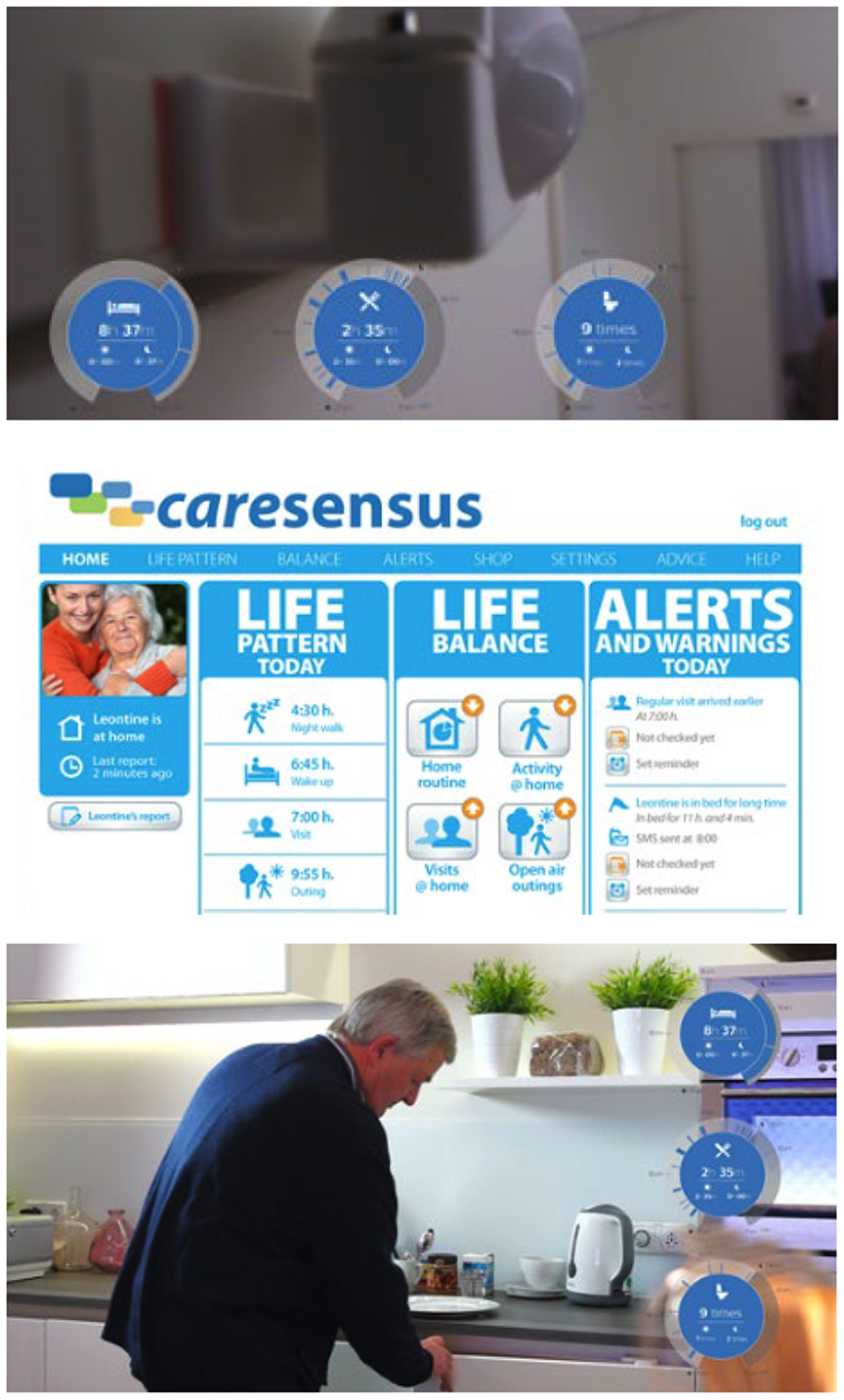
Source: Philips Home Electronics
The New Human & Robot Working Relationship
Deployment of AI, both in distribution and in store, will influence cost savings, increase process efficiency, and impact retailers’ labor models. On a financial level, AI can help balance capital expense over time (not unlike eCommerce today) to reduce labor and improve shopper response times. Unlike a warehouse, stores have the added complexity of unpredictable shopper activity and resulting safety concerns. The store of the future can begin to deploy AI and robot technology only after shopper interaction and safety concerns have been addressed.
The store of the future will feature a complex system in which automation, robotics, and humans will collaborate, each adding value to the store, the overall business, and the shopper’s experience.
Today robotic automation can handle repetitive (and boring) tasks such as inventory monitoring and reporting on-shelf or in aisle. With online grocery fulfillment, robots will quickly become better than humans at tasks such as product selection and order consolidation. In both instances, shopper and employee safety are paramount. The risk posed by a robot causing injury due to falling onto a shopper or bumping into a shopping cart will spur insurance companies to establish guidelines before robots can be deployed.
For the near term, robots are likely to be restricted to areas of the store where shoppers and robots cannot interact. This is both emotional (some shoppers may be uncomfortable with robots) and practical (robots cannot effectively navigate unpredicted shopper movements). This will change quickly, and within the next decade we will see mobile robots moving out of secured areas or backrooms and into the store floor occupied by shoppers.
The strengths of the Amazon Robotics (Kiva) system include its flexibility of use that leads to innovations in product storage, integration with upgrades in warehouse software, and adapting to hybrid work environments that can continue to evolve with human interaction.

Source: Amazon
This is a logical response to some of the groundbreaking capabilities that Amazon began developing several years ago with its purchase and deployment of the Kiva robot system, now known as Amazon Robotics. Amazon purchased Kiva in 2012 and began deployment in 2014. The competitive advantage of this capability has less to do with the core technology and more from integration with warehouse and fulfillment software — the result enables a better model for humans and robots to work effectively in an automated environment. Amazon has made robotics part of its core fulfillment center strategies. In the coming decade, all competitive retailers will need to do the same.
Robotics development is a major investment for retailers, involving process redefinition, capital, and time. The returns are expected to be increased shopper satisfaction and shifting of costs from the P&L to the balance sheet.
New, ongoing labor costs will emerge as humans provide support for the robots themselves. Monitoring, maintenance, and updating will all be technical tasks performed in much the same way as the invention of the personal computer created needs for software programmers and IT support. Whether this will be at the store, district, or chain level — or outsourced entirely to a third party — is hard to predict, but at least some level of technical expertise will be required in the individual store. At the very least, store management will need trained staff to ensure proper robot operation and place calls for help as required.
Technology & Training
In a high-tech, omnichannel retailing world, talent development will be critical — on the front lines, where the work gets done. Meeting the requirements of associate and customer training will be critical to the store’s success in the future.
As the store will integrate logistically with other forms of commerce, retailers must develop new infrastructure that is increasingly digitally enabled. Technical skills must evolve in parallel. New operating models such as stockless fulfillment hubs and automated curbside pickup will become the norm as shoppers seek more speed and convenience in the delivery process. But shopper enablement is also part of this new environment. So, as new services and solutions emerge, shoppers will also need to develop new skills to participate in the digitally enabled store environment.
As a training tool, virtual reality (VR) has proven to be versatile and effective. In other industries such as healthcare and sports, VR is now used to help educate medical students and sports professionals to get a more realistic and low-risk view to a potential real-life situation. Increasingly, this technology is moving into the retail space, educating associates in customer service, DIY projects, even simulated Black Friday rushes. As VR technology becomes more mainstream, it has the potential to efficiently train associates to fulfill new services. Expanding the use of this software tool beyond employee training is recommended in the next few years — including educating shoppers to become better at using new products and solutions available from the retailer. VR may be the most rapidly evolving and effective tool to improve the overall productivity and experience of the store going forward.
VR is no longer a novelty. It will become critical to educating employees and shoppers in the key skills required to maximize the store’s productivity and performance.
Walmart has already committed heavily to the existing forms of VR training. In September 2018, Walmart announced an expansion of use of VR headsets for training purposes. By the end of 2018, there will be 17,000 headsets available at store-level, giving more than one million Walmart associates access to virtual learning, according to “Walmart Today,” a blog on the Walmart website.⁶ Foreseeing the ongoing value of this technology, Walmart recently acquired a small company called Spatialand, which specializes in developing VR content.
As the workforce becomes better trained and better skilled, those workers will also require wages and retention strategies to match. Retailers with a heavy dependence on part-time workers, especially those in areas where alternative employment creates high turnover, will be at operational risk. One of the coping mechanisms will undoubtedly be advanced levels of automation, AI, and robotics — deployed much closer to the shopper than today’s automation of tasks such as backroom logistics.
6 As detailed in TechCrunch.
The future store employee will require new knowledge and technical skills. Training and capability development for store employees and management will become critical for all competitive companies.
Number of employees
- Potentially fewer, but that depends on the store. Stores that differentiate on enjoyable experiences will have more employees.
Accommodations for employees
- Ongoing training programs for at least some of a store’s employees to be able to manage (and troubleshoot) that store’s AI and automation
- Digitally integrated scheduling and workforce management tools to help plan more predictable working schedules for employees
- Better compensation
- More empowered store managers able to make nuanced assortment decisions at the local level
Challenges
- Reducing turnover — as turnover nullifies significant investment in training
- Attracting talented employees
- Keeping proper training up to date and consistent
Types of employees
- Fewer for rote tasks
- More strategic thinkers
- More software engineers, programmers, and data scientists
Skills of frontline employees
- Personable
- Knowledgeable about store offer and backend logistics
- Team-oriented
- Analytical ability
- Big-picture thinking
- Flexibility for changing and unpredictable tasks
Opportunity
- Brand loyalty driving store locations
- Successful defense against store erosion to eCommerce and other digitally connected stores
- Engaged workforce with higher internal satisfaction
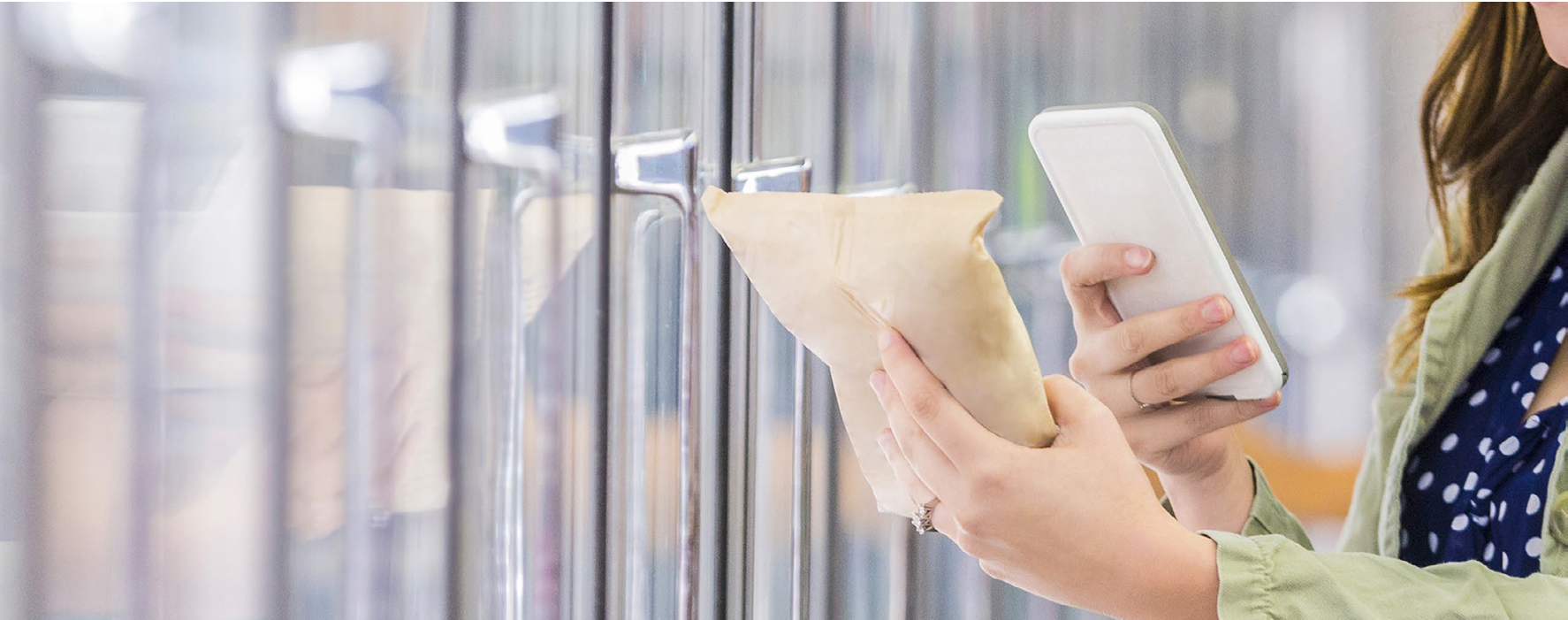
The Store Environment of the Future
Perhaps the greatest risk to any retail environment in the 21st century is to be predictable or boring — yet, many stores are designed to be easy to manage and clean, speed movement of stock, avoid theft, or for general risk mitigation. Few focus on inspiration, ease or speed of navigation, or exciting and entertaining shoppers. The modern grocery store is well designed to be stocked and its very familiarity is designed to make routine shopping efficient, but that very familiarity is potentially fatal in the long run. This risk is most acute in center store, still a critical area for profit and volume, but increasingly under siege by competition and changing shopper preferences — including online replenishment.
The Physical Store in a Virtual World
If there is to be a viable, thriving store of the future, it will need to be less predictable, more attractive and engaging to the senses, more flexible to shopper preferences, and far more interactive.
Store Design Requirements
Perhaps the most fundamental requirement is anticipating the need for ongoing, probably unforeseen, change. Today’s standard of remodeling the store approximately once each decade will be insufficient when technology and shopper expectations are changing on a compressed, three-year cycle.
If the future is about rapid and unexpected change, then design must enable flexibility in all parts of the interconnected physical and virtual space.
The store of the future should probably be designed to be regularly revised, remerchandised, and refreshed. Refrigeration should be self-contained. Gondolas and fixtures will need to be moved multiple times, and power should drop down from the ceiling — making it easier to re-route and enabling all of this reconfiguration. Much of this flexibility already exists today in well-designed stores. With continued improvements to insulation, energy usage, and moveable fixtures, store sections could be modified nearly weekly, especially with assistance from robotic labor active in the hours shoppers are not in the building.
The front end is likely to change the most over the shortest time horizon, as it’s likely that most of the cashier-driven interactions we currently depend on will be superseded by contactless payment. The ability to reliably identify shoppers takes this a step further by pre-qualifying them prior to the point of compiling transactions and charging them. Thus, thinking through what to do with unneeded front-end labor and space will be time well spent.
The Center Store Re-Emerges
For decades, retailers have been shrinking the profitable, but unexciting, center store to expand and invest in the far more interesting and emotionally engaging perimeter. Fresh foods and services have emerged as critical differentiators for retailers. The perimeter, too, will need reinvention, as the experiential shopper demands a more flexible, fresh, and dynamic space. Just as the center store has been under scrutiny, the perimeter will require incremental technology, and more futuristic capabilities involving both digital enablement and physical materials design.
An example of incremental technology includes the intermingling of refrigeration fixtures, at least partly erasing the barrier between center store and perimeter. This enables focused trip solutions where trips are more targeted and the perimeter becomes more attractive as an experience. Today, forward-looking retailers reconfigure center store space into mini destinations that solve a specific shopper need, creating short-term shopper value. This enhances convenience for the shopper by co-locating relevant, trip-related items, and it helps to expand basket size by offering adjacent or ancillary products.
The big idea behind this is to choose to combine center store and perimeter departments. Store design enables this by bringing electrical power into the aisle, creating new opportunities to configure sections and display products based on trip type.
Traditional parallel aisles and endless gondolas do not trigger much engagement — further evidence that today’s “efficient” store design is not shopper focused. Breaking up long aisles into varied units and solution spaces can create excitement and interest in these flexible, emerging spaces.
HEMA is Alibaba’s new supermarket chain in China. As expected, it is an expression of the omnichannel reality that the company has deeply invested in, but at the same time reflecting store design and excitement intended to attract and retain shoppers. Shoppers’ high level of digital ‘comfort’ and device use are seamlessly integrated into the physical store experience.
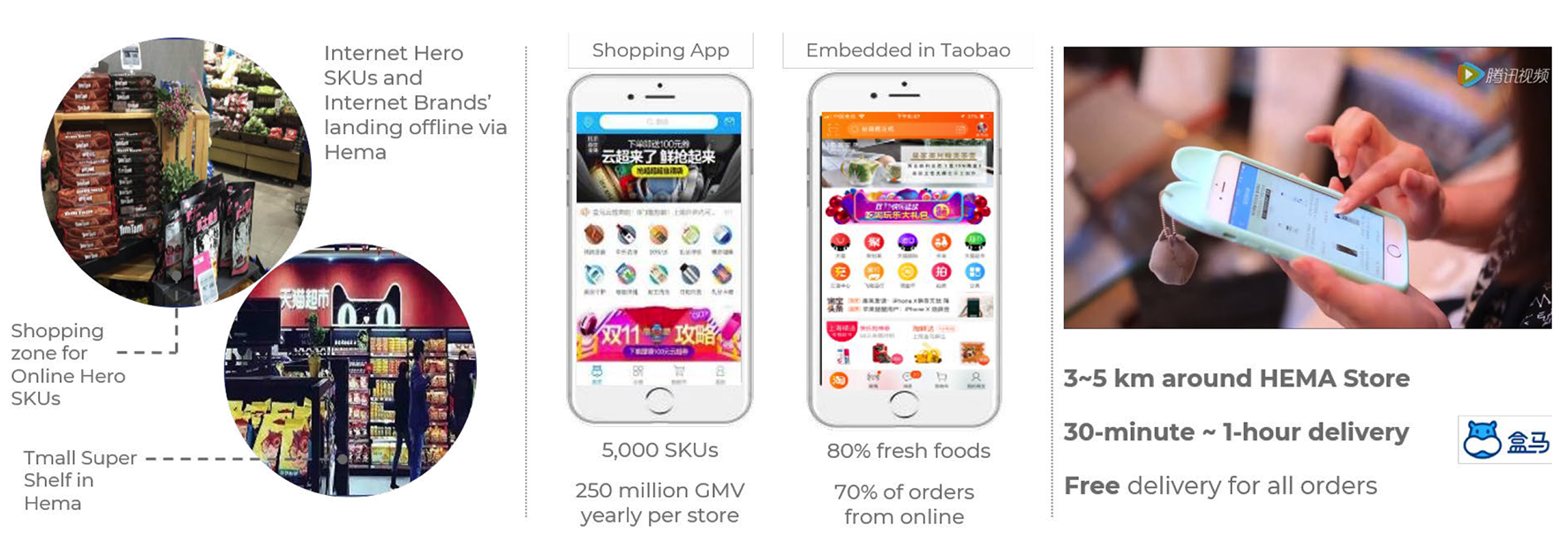
Source: Kantar Consulting
Center store engagement can vary in complexity — from self-serve to service-oriented. These examples (and experiments) are found in a range of grocers in the US, Mexico, and Canada.
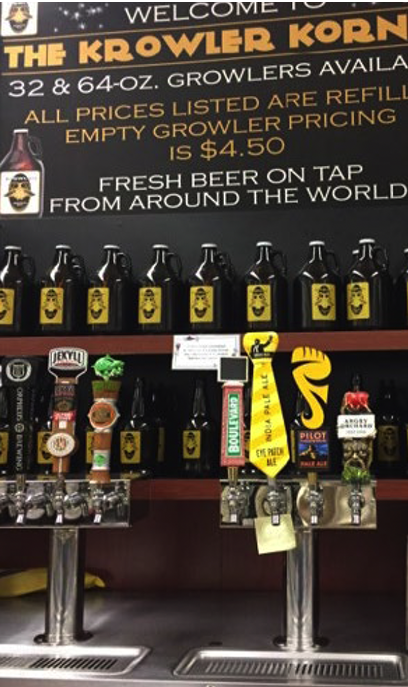
Kroger — Build your own products: The “Krowler Korner” with fill your own beer growlers.
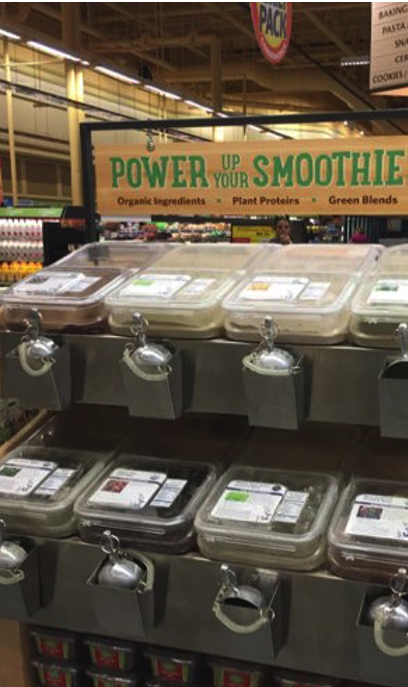
“Power up your smoothie” protein shake bulk display at Wegman's.
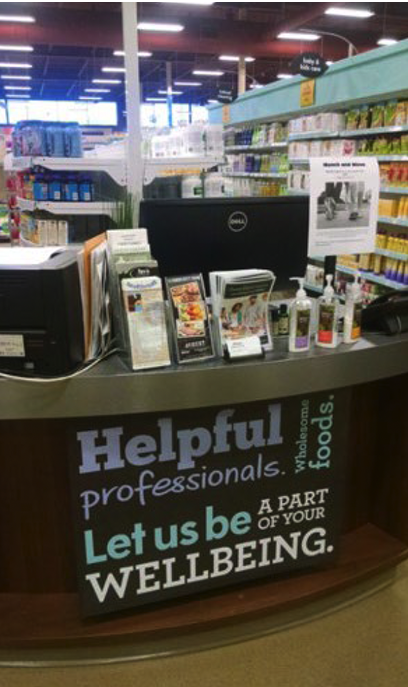
Health and wellness services in the middle of HBC section at Sobeys in Canada.
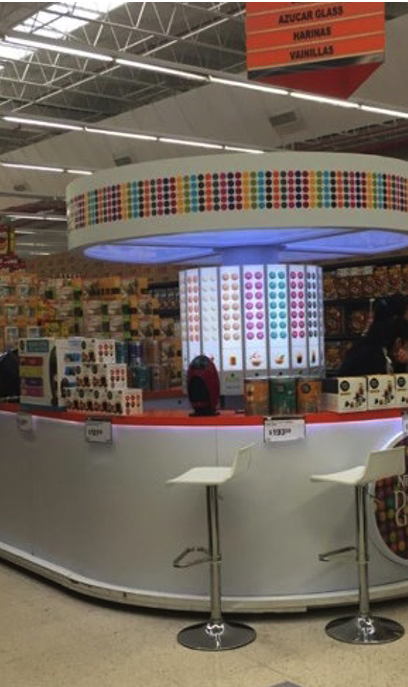
Food service in the center store. Nescafé builds a café at Selecto Chedraui to promote its café pods while giving shoppers a break.
Source: Kantar Consulting
That same availability of power and the common use of store wi-fi to stream and communicate relevant messaging — aiding sensory experiences in select departments — will help enliven center store marketing and shopper way-finding. As flat screens have become inexpensive and reliable, more flexible shelf-molding and other fixtures can now stream media to engage shoppers, a key merchandising tactic as the shelves become active information providers. Manufacturers and retailers are using digital at the point of contact to signal to shoppers that additional products are online, encouraging omni-shopping behavior.
Interactive video screens can also be used to draw shoppers’ attention to new products or features. Offering product information or incentives through digital can help break down trial barriers. Embedded screen technology can elevate in-store marketing, converting glass cooler doors into information vehicles. Transparent LCDs are gaining very high resolution along with visibility in bright natural lights — and they are currently in use with cooler doors and display cases. Given the rapidly declining cost for LCDs, and AI as a responsive control system, these combined technologies are feasible for deployment against entire store walls or even exterior windows. Such display systems can provide a new depth of experience for shoppers as they stream media, feature promotional messaging, and offer an engaging merchandising element for the store of the future.
The store of the future is likely to require a host of in-store digital screens, opening new and flexible ways to market, communicate, and solicit advertising support from branded suppliers. It seems inevitable that the same electronic location would also enable biometric tracking of shopper interactions to produce proprietary data for how shoppers are behaving in store, in the process absorbing most of the existing camera-based security systems.
Visual content in the store introduces digital excitement into the aisles and creates an ability to customize the experience based on display distance and shopper interaction.
The center store will benefit from a motion-detection-driven merchandising system, which can stream media across the whole of a category set. Once a shopper observes from a distance, it creates a streaming billboard of a single impression across the whole with great visual impact. As a shopper moves closer, the system can narrow down to product identification. The nearer the viewer, the more granular the information can become, such as item-specific pricing information.
Based on the movement of product, product specs will emerge on the molding. The same means by which shoppers are detected and moving product means the shelf can establish inventory intelligence and product counts in real time. In some cases, product identification via visual verification or RFID tags can communicate if product has been misplaced, eliminating “virtual out-of-stock” scenarios.
Examples below illustrate in-store use of digital touch screens to expand merchandising potential and shopper education using relevant content and graphics. At right is a clear LED panel showing streaming media of product promotions and information.
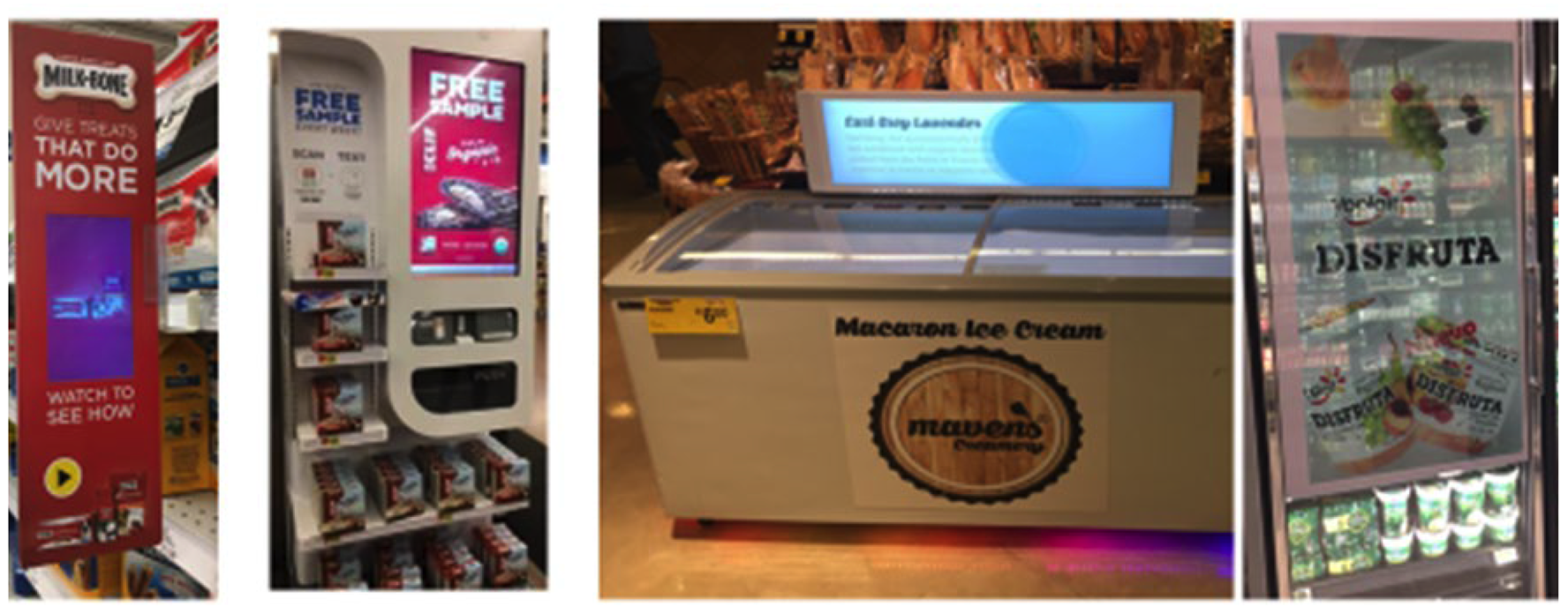
Source: Kantar Consulting
Integration of the shopper with parts of the supply chain and existing inventory becomes a norm for operations.
The AWM Smart Shelf solution can project a range of media options in high resolution while changing content based on the distance of the shopper from the fixture. Closer in, the shopper gets product detail while being monitored for facial reactions. The same capabilities can observe shelf status of inventory, triggering restocks.
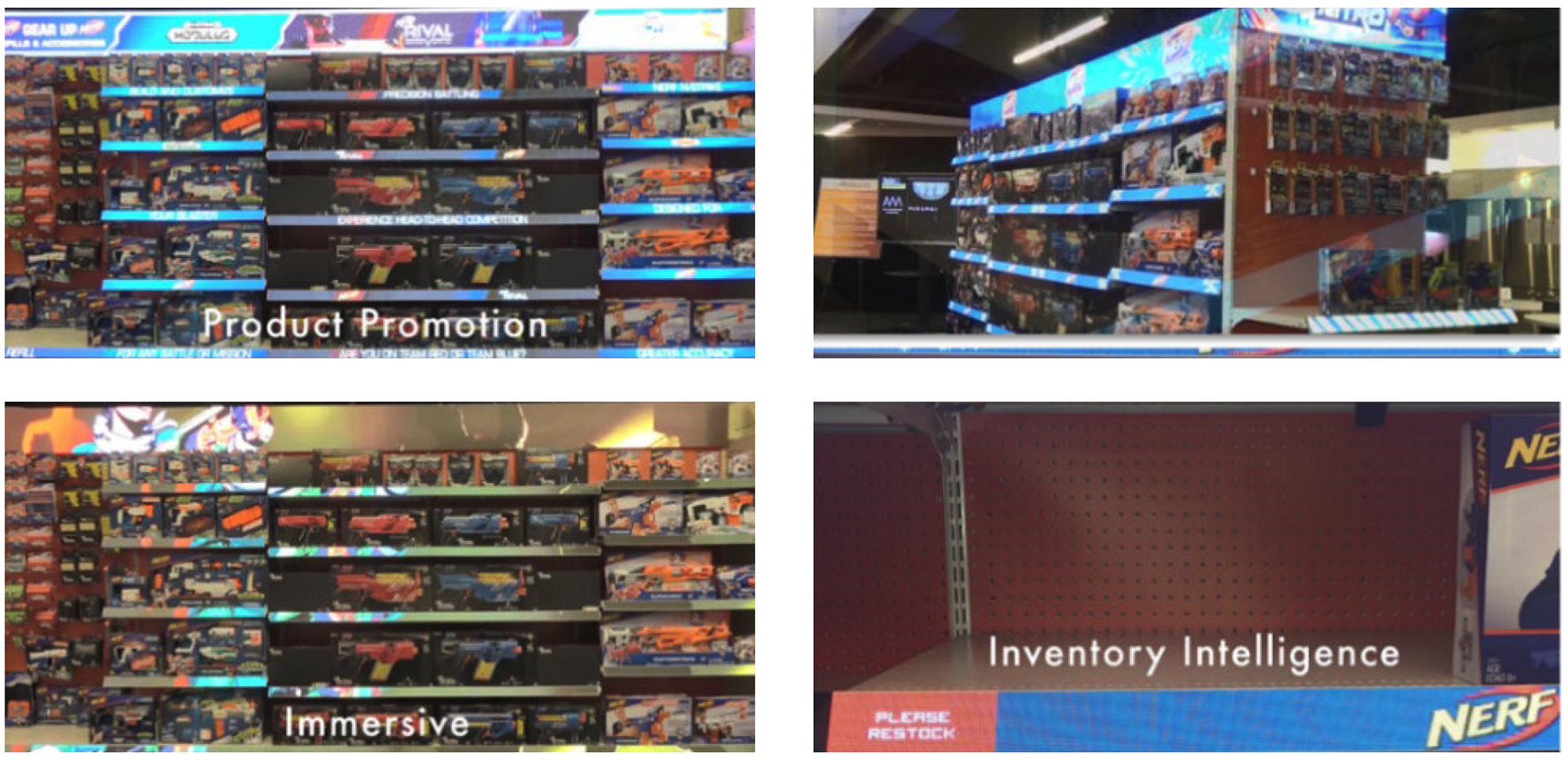
Source: https://smartshelf.com/
Another incremental approach to center store is to add service components that might otherwise have appeared on the perimeter. Today, smart retailers are already adding services to the center store, creating a mini-destination for the aisle, while creating opportunities that encourage shoppers to have a more interactive relationship with the store.
To date these services are manifest in a few different types. “Build your own product” options have appeared in both Kroger and Wegmans, allowing shoppers to personalize the trip, ranging from mixing soap products to creating smoothies. Health and wellness services, such as stations manned by dieticians or nutritionists, offer opportunities to dispense advice and assistance, engaging shoppers by offering expertise, such as those at Sobeys in Canada.
Food service has also evolved, bridging the gap between center store and more traditional “manned” service departments. Nescafé built a mini café at Selecto Chedraui in Mexico to promote its new café pods; in the US, numerous retailers including Kroger have opened stores with small bars offering wine, beer, and a place to take a break.
Three examples of solutions offered within the center store, showing innovation, cross-department, and category fusion along with shopper engagement
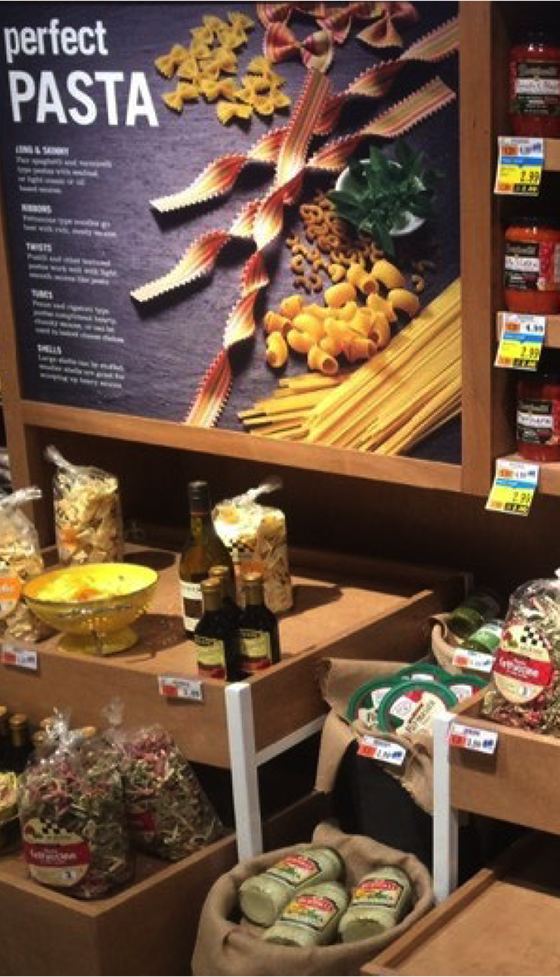
The “Perfect Pasta” display at Market 32 takes a conventional display (pasta and sauce) and elevates it to a more premium feel via enhanced fixtures and merchandising.
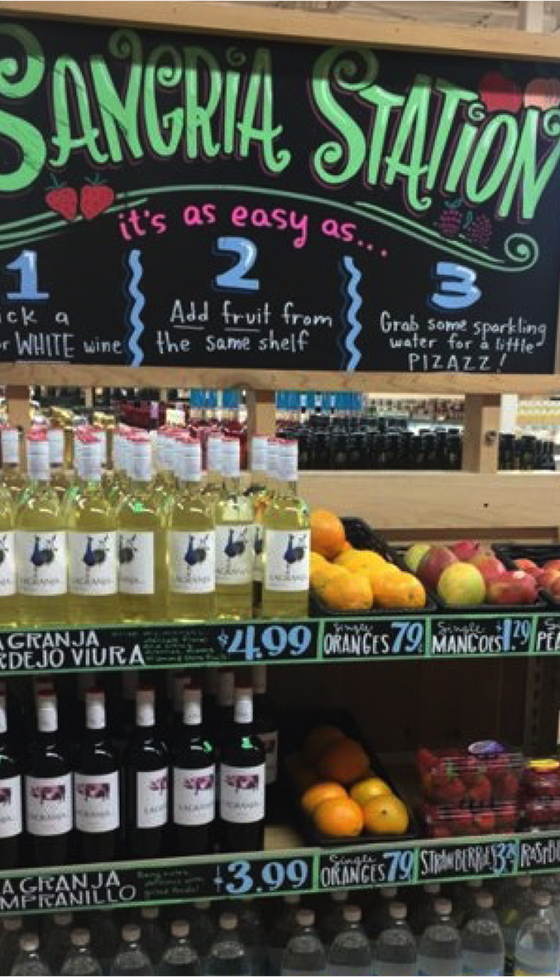
The Sangria station at Trader Joe’s combines five categories from the perimeter and center store to create a unique occasion that drives excitement and trial of seasonal products.
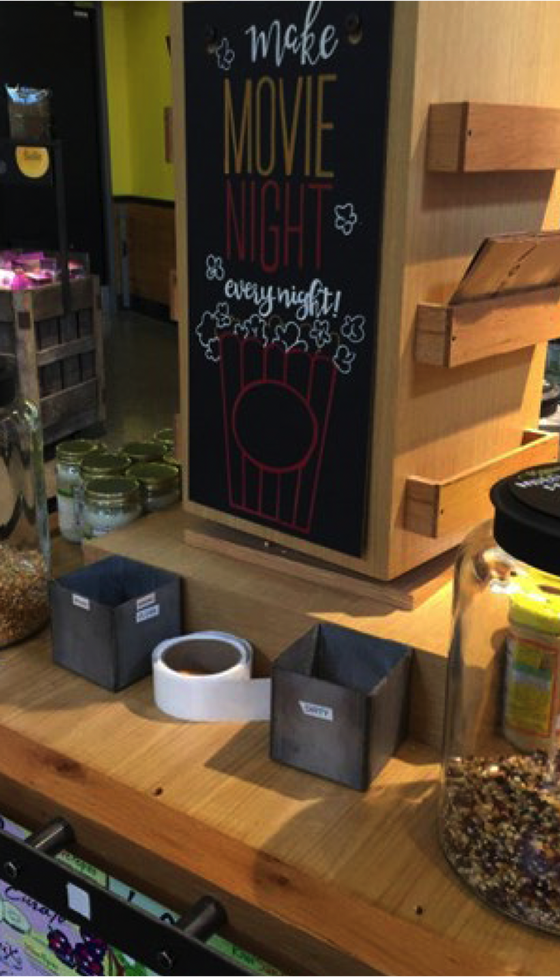
Whole Foods’ “Make Movie Night Every Night” moves popcorn beyond item selling by suggesting occasions that encourage togetherness with shoppers’ friends or family once they leave the store.
Source: Kantar Consulting
Regardless of what a given retailer may decide to add to the center store, one realization is clear: the days of long, uninterrupted aisles of shelf-stable products driving traffic (or creating loyalty) are clearly over. Experimentation to enhance the center store, focusing more on the experiential, is long overdue. With products now available nearly 24x7, retailers need to think about ways to drive a trip. The enticement might be similar to an amusement or theme park (think Disney’s Harry Potter World, for example). Sensory merchandising attempts to generate and harness the same interaction and stimulation provided by theme parks.
Reimagine the Center Store as a park or hotel, with guests being guided to new experiences providing inspiration, occasion-based solutions, and relevant products.
The imperative—and objective—is to interrupt, to surprise, and delight the shopper. One way to interrupt is to bring life-size props into displays, providing originality and an element of surprise, making shopping fun. This underlines an overall theme that the job has evolved beyond just selling cases. Stores increasingly must be organized creatively. By doing this, retailers and brands create a unique experience that differentiates the center store space. Furthermore, it helps physical stores “defend” against online grocery by evolving away from being an unemotional, transactional space.
The challenge will be not only to find new ways to enliven the center store, but also to retrofit at least some elements of these changes into existing stores that were never designed to support them.
Services become a major competitive advantage for retailers and a new growth opportunity over the next few years; shoppers are increasingly expecting the store environment to respond to a broader set of needs (including entertainment). Use and Interest of In-Store Services (Among all primary household shoppers: Use and interest in service at any retailer)
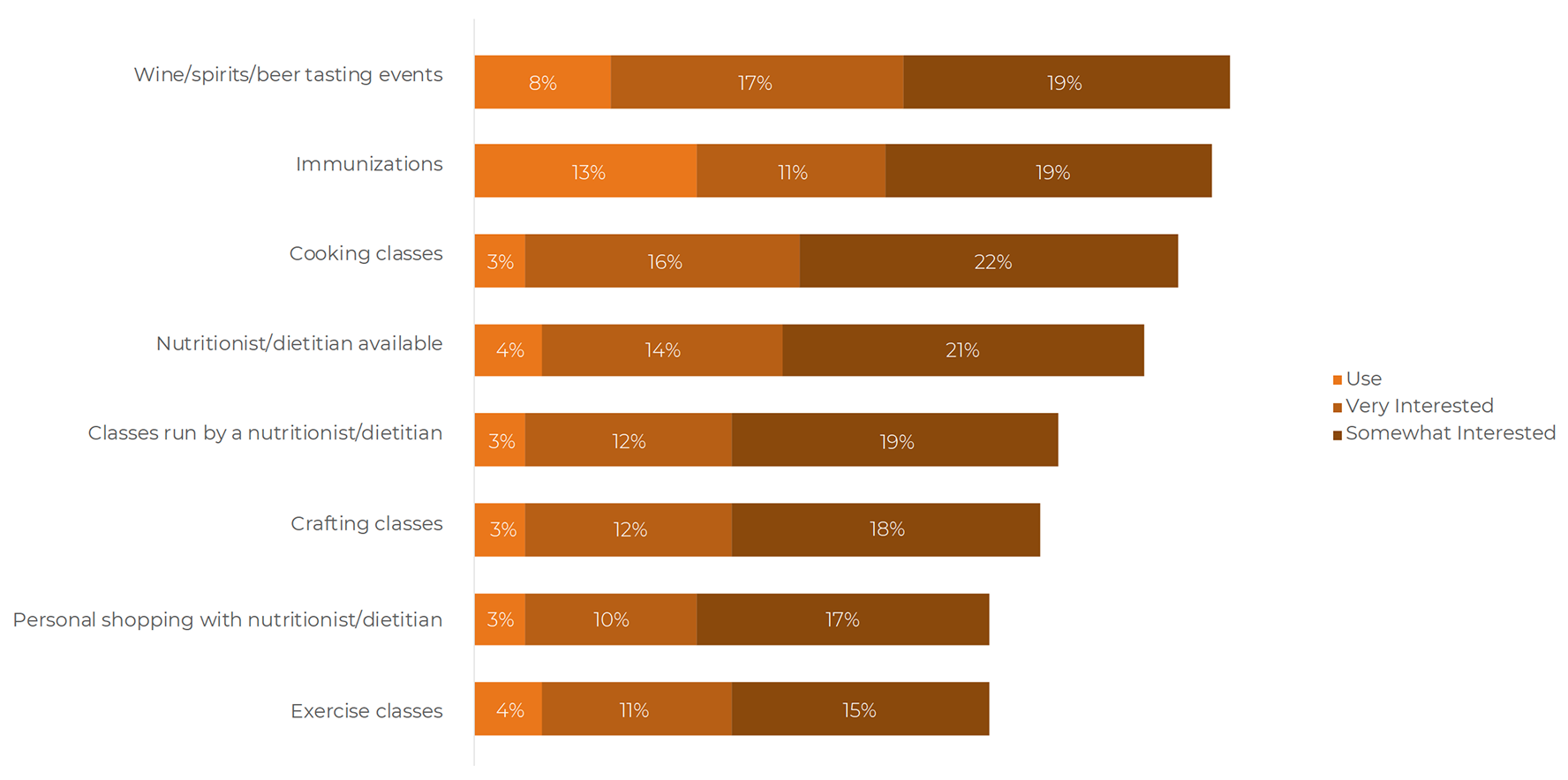
Source: ShopperScape, March 2018.
Experience Becomes Sensory
The challenge for the store of the future is to create new spaces and dynamics that keep existing shoppers engaged while drawing new ones in. New technologies that can be useful in remodels will be important for elevating existing stores to enable new, and continually evolving, experiences. Floors, walls, and ceilings will all be part of a digital environment in which each can change color, hue, and lighting in a moment to change the environment, and set varying moods to fit the flexing energies and experiences of day-parts (morning, mid-day, evening). These can be interactive displays, moving art, or information rivers that will surround the shopper and create the real change capabilities required of the store of the future.
The framework of the store space — walls, ceilings, and floors — will be digitally enabled to establish the real-time flexibility to engage the future shopper effectively.
Here again, digital technology offers a means of achieving this through visual input, as the packing of more LED nodes to a panel has gained enough resolution to create a real and in-depth viewpoint. This has the potential to go far beyond mere signage or TV-like experiences. Panels are now often made up of 8- to 12-inch panels that can be combined together to cover an entire wall or a large floor space.
With such high resolution available comes the ability to create a 3D image in motion. Retailers can create “living environments” that can surprise and delight the eye. The shopper can walk through these environments, which can be programmed to be somewhat interactive. Imagine a floral department in a rainforest, a fish counter underwater, a frozen food aisle with a floor that looks and feels like ice-skating.
Below, an embedded floor features a high-ratio LED panels that are linked to pressure sensors in the floor. Combined with the sound the shopper is walking through rustling grass with flowers that emerge after each step. At bottom a 3D resolution set of panels showing flowers in slow motion capable of streaming media over a 30-meter wall within a store.
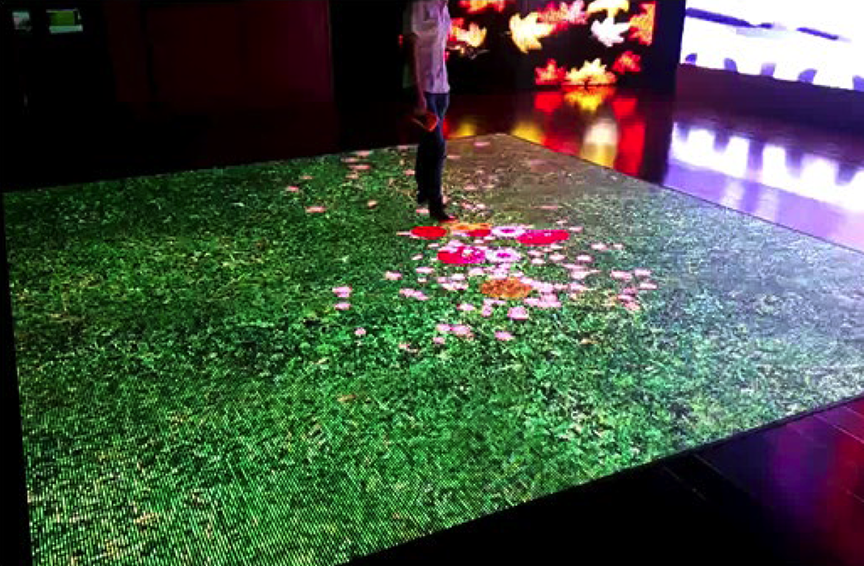

Source: Kantar Consulting
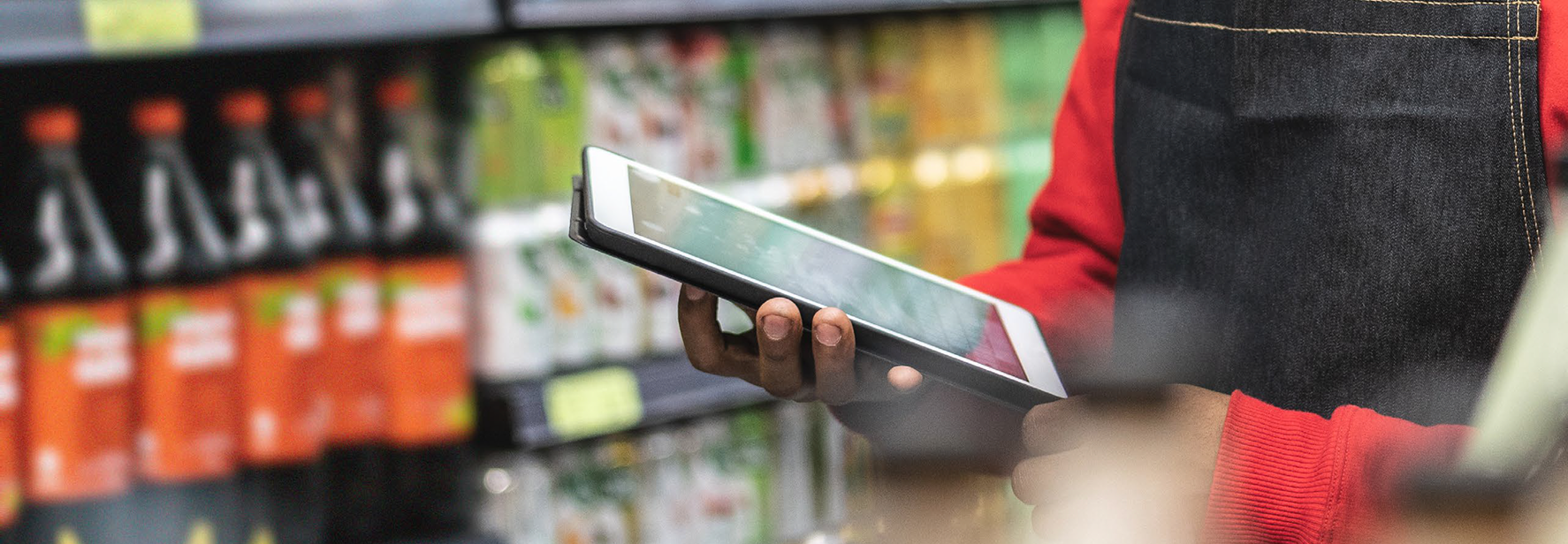
The Store as a Data Center
With all the new technologies coming into place throughout the store of the future, the store itself becomes both a generator of data and a source of massive amounts of information processed on site, which can then be actioned in near real time.
This capability has been a considerable advantage for many years for those retailers who deploy it properly — for example, front-end transactional data has been a source of operational insights as well as a profit center. More advanced retailers have at least partially integrated loyalty programs as another source of insight as well as a marketing tool.
The store of the future must take a dramatic step forward as an information center. Most data today is aggregated to make it easier for humans to find something actionable. The technical systems that were in use a decade or more ago still limit much of the programming and results.
The store of the future will be able to process more individual information, collate it, organize it, and deliver it to systems at a level of granularity we could not have imagined years ago.
In a simpler structure it could gather and aggregate knowledge of shopper behaviors, product movement, and the entire store for dynamic usage to align with several AI solutions, outlined below:

Use of Data as a Profit Center
Selling data to become an increasingly profitable activity, though this may become challenging with changing privacy laws that can redefine data ownership and allowed usage.
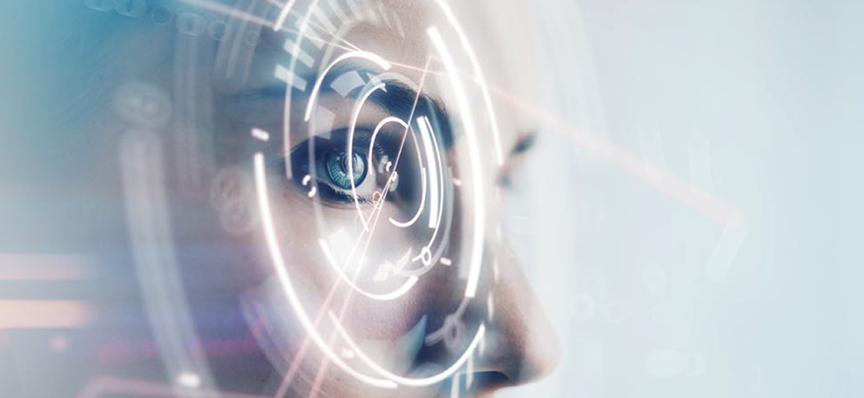
Solution Generation
Data gathering powers and enables AI systems to solve problems with more granularity. Increased data gathering can lead to more timely and relevant shopper solutions.
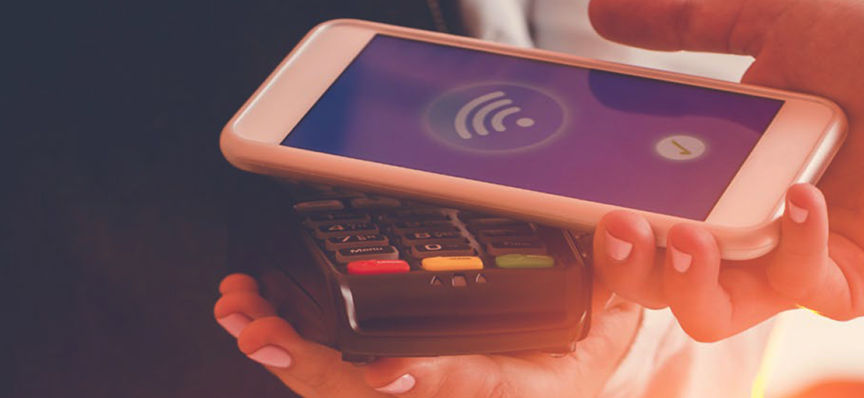
Overall Transparency
Blockchain (detailed in the next section) enables far quicker tracking of many processes with applications such as data fraud prevention and can more quickly identify illicit activity.

Loyalty Programs
Retailers can implement blockchain for managing loyalty program information. The technology can help increase redemption rates, improve customer service, and focus targeted marketing.
Blockchain in Context to Retail
Blockchain technology has emerged recently in context to retail supply optimization, especially to documentation of transactions from source through to use. Major retailers and logistic groups have started to demand at least a partial use to provide validation throughout the cycles of product movement. In The Business Blockchain,⁷ William Mougayar described it like this:
Imagine two entities (e.g., banks) that need to update their own user account balances when there is a request to transfer money from one customer to another. They need to spend a tremendous (and costly) amount of time and effort for coordination, synchronization, messaging and checking to ensure that each transaction happens exactly as it should.
Typically, the money being transferred is held by the originator until it can be confirmed that it was received by the recipient. With the blockchain, a single ledger of transaction entries that both parties have access to can simplify the coordination and validation efforts because there is always a single version of records, not two disparate databases.
The challenge with blockchain technology today is that validation routines are energy-intensive and processed by third parties. In a decade’s time, however, available solutions in this space will be far easier to use in handling both store-level transactions and total-company data — with all data being equally secure. Moreover, such systems will be able to store related transactions along with user observations and commentary that can be made transparent and useful to a range of system interfaces.
7 William Mougayer, The Business Blockchain (May 2016), Wiley Publishing.
How Blockchain Works
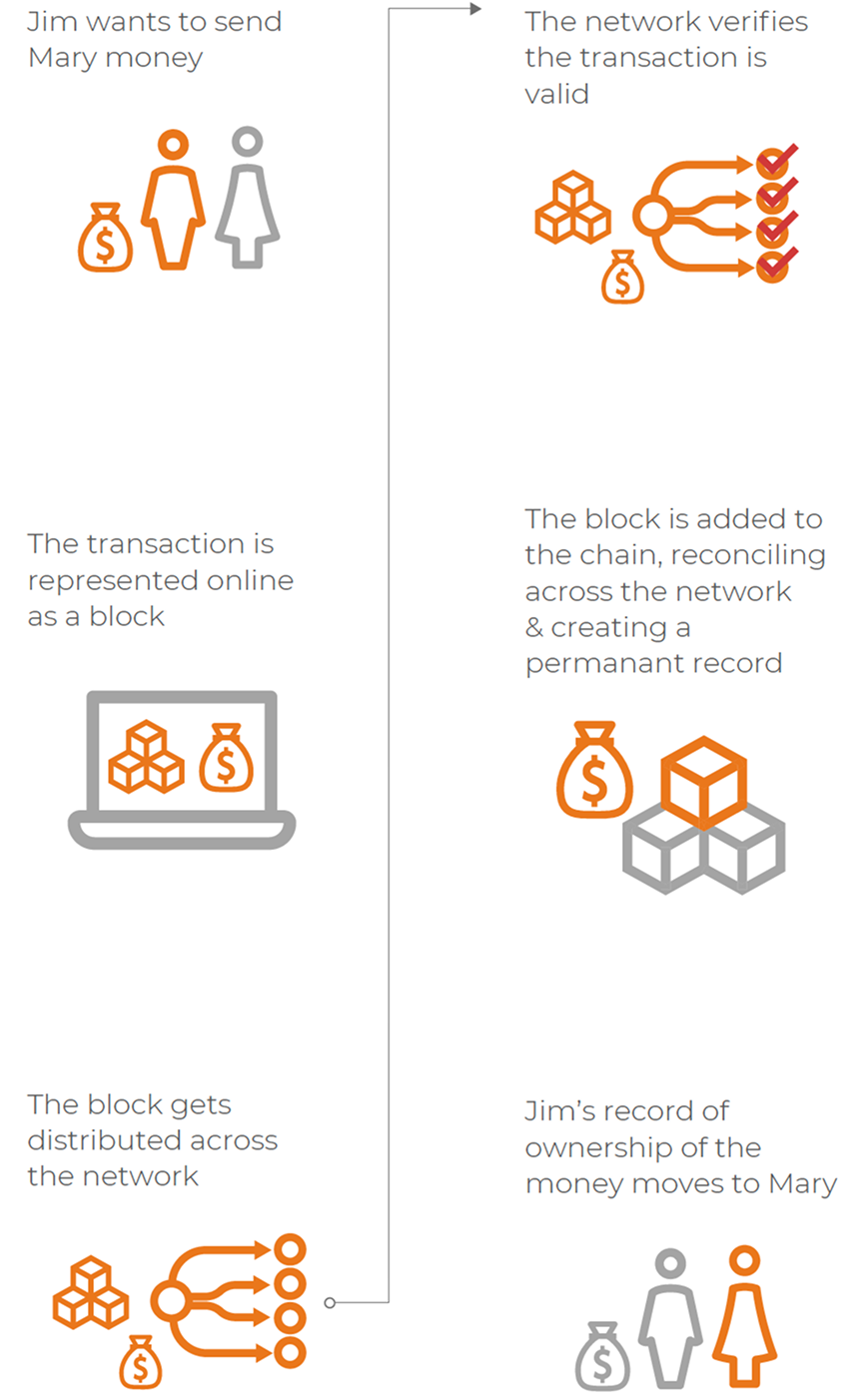
Source: PaulDughi.com
The Responsibilities of Being Data-Intensive
Most of the assumptions associated to the future in any industry is intensive data collection, management, and resulting usage to improve business effectiveness. But as events have consistently shown for the past decade or more, “data intensive” also brings security risks and liabilities on multiple fronts. These risks vary — including proximity to events, government regulations, and damages incurred by credit and identity theft — but the end result is a loss of shopper confidence and trade. Almost all retailers have invested heavily in making their information technology systems responsive to third-party intrusions such as financial data breaches.
The future threat is less the traditional hacker operating for profit or mischief, but rather the gray areas emerging from asymmetrical warfare that transform a variety of data tools into security weapons.⁸ Today, IT security remains in the top three investment areas for most companies; the future will call for far better systems to be in place to prevent damaged trust. In particular, third-party cloud services will need to be vetted repeatedly along with frequent security updates and system-wide changes.
8 In June 2017 ransomware called “Petya” was released into a key financial app in Ukraine. By design it rapidly spread throughout most parts of the country’s computing system, encrypting the file access tables (FAT) and showing a screen stating that the files could be accessed with a payment via Bitcoin. Except that was not true — there was no real account to pay. The software was intended only to destroy systems as an act of sabotage by operators in Russia. Relabeled ‘NotPetya’ the ransomware did not stop with Ukraine, and within a day it had infected and brought down systems across a range of major global distributors, manufacturers, and healthcare companies.=

Connecting to Product Origins & the Farm
As stated earlier, the store of the future will need to provide a physical, tactile, and emotional experience. If it is merely visual, then it is playing on the same field as purely digital retail. The store of the future needs to leverage its own physicality — leveraging the environment, fixtures, and space management for product trial, shopper inspiration, social interaction, services, and education. One of the obvious ways to do some of this is to leverage the food itself — the most appropriate area of expertise and product knowledge that a supermarket can offer shoppers. In the future, the total food offering — shelf stable, fresh, meal kits, and QSR/food service — will be key to effective store branding.
Shoppers see proximity to origin, that is, the farm — and by extension organic — as being healthier and a strong value-add that will only increase going forward.
The store of the future needs to be a branded offer with compelling attributes that will attract, engage, and reward the most loyal shoppers. More than ever before, the retailer must be the shopper’s “agent,” a source of assurance that the food products in the store are wholesome and safe, providing a sense of trust in what the store can and will offer. Freshness and quality need to be at the core of a retailer’s brand attributes, and the store and shopper experience within it should all support that.
Shoppers are already paying attention here, in ever increasing numbers. Clean food labels, clear attention to dietary needs, organic choices, local sourcing, environmental impact awareness — all of these are already “hot topics” for many shoppers and are on most retailers’ development lists. Recent data shows more than 75% of supermarkets now cater to organic shoppers. This is true today, and in the future we can expect this demand to intensify.
Shoppers increasingly expect transparency in labeling of product contents/ingredients, along with advice on consumption or usage to improve health. Organic food’s popularity is a reflection of that focus on health benefits, with shoppers associating organic as being closer to the product origin or farm, chemical free, and thus better for them.
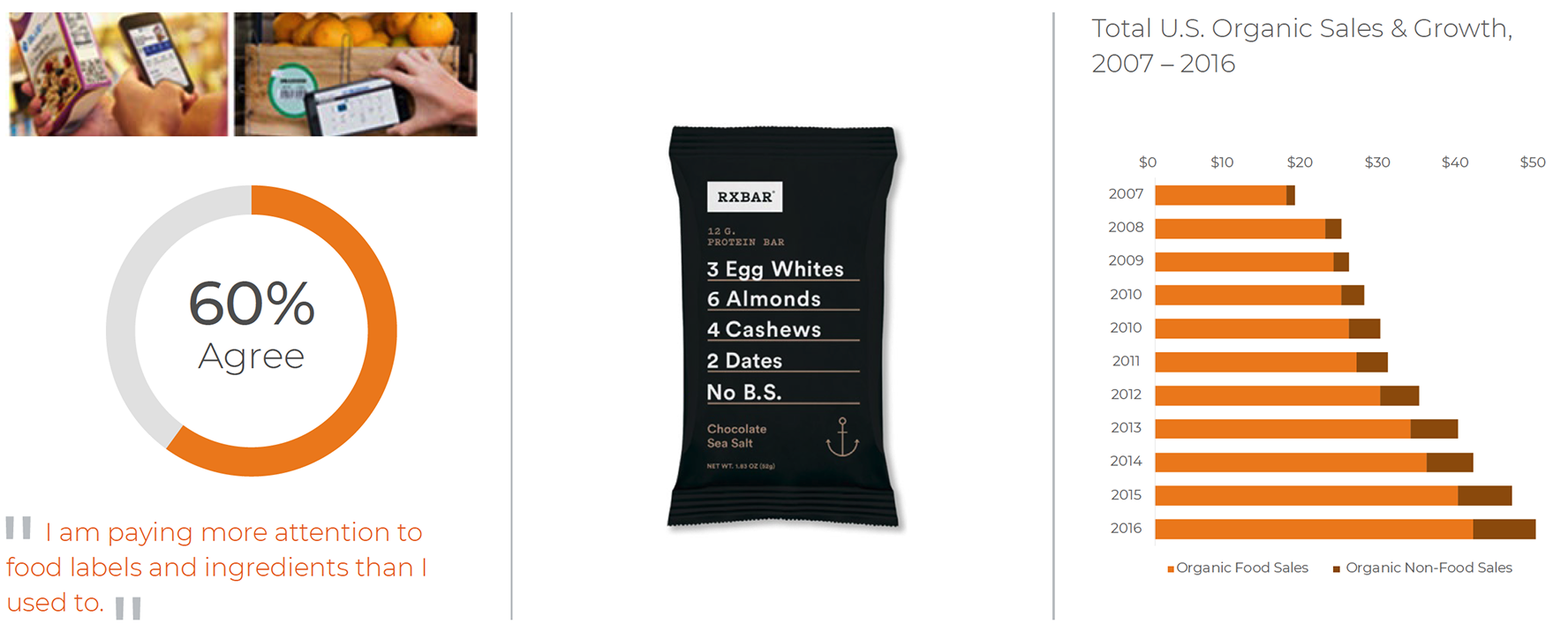
Source: Kantar Consulting ShopperScape data and Organic Trade Association, 2017.
Here, the grocery store has an embedded advantage which needs to be leveraged fully. Some of this alignment with wholesomeness, local product access, and support for local farmers and suppliers can be “enhanced”: today, it is common practice to bake bread in store to enhance the sensory experience, or to use spotlights or task lighting in the meat case to enhance the look of freshness. But the real winning formula is to align to the desire for good food, properly handled and delivered, and displayed in the most enticing way possible. That is the essence of the emotional balanced with the functional. Not only will the store provide the right products, but it will continue to reward shoppers, making them feel good for visiting the physical store, interacting with knowledgeable staff, learning about new offerings, and providing healthy, nutritious meals back at home.
As noted previously, the store of the future will have staff that will be supported by AI, robotics, and a wealth of actionable shopper information. The perimeter, no less than the center store, needs to use these tools to personalize the shopper’s experience, to remove purchase hesitations, and enable a shopper to view the store as her advocate, agent, and quality assurance lead. Few supermarket retailers would want to be anything less. In addition, the store of the future will have to deliver goods to satisfy a global palate, but still offer local products whenever available.
Virtually every region of the US has special cuisines — from southern BBQ to New England clam chowder to chili, from biscuits to rye bread and croissants. Ethnic groups have lists of key ingredients for everyday food preparation along with strong requirements for a variety of meats and special cuts, produce items, and specialty bakery products. Immigrant groups tend to arrive in groups over time, placing additional requests on the store to adapt to and begin supporting their “basic” food needs.
Based in Amherst, Massachusetts, the Atkins Farms apple-growing business began in 1887, when Howard Atkins' grandfather planted the first McIntosh trees. The orchards were expanded over the years but the Atkins family sold most of their apples wholesale, all within a radius of 100 miles. In the 1950s, Howard started selling apples out of the garage near the family home, and then from the cold-storage building and cider mill he built. Starting in 1980 garage sales moved to a large mixed-produce shed with a greenhouse and bakery. In 1995 it transformed into a 25,000-square-foot store in an award-winning mixed-use building.9
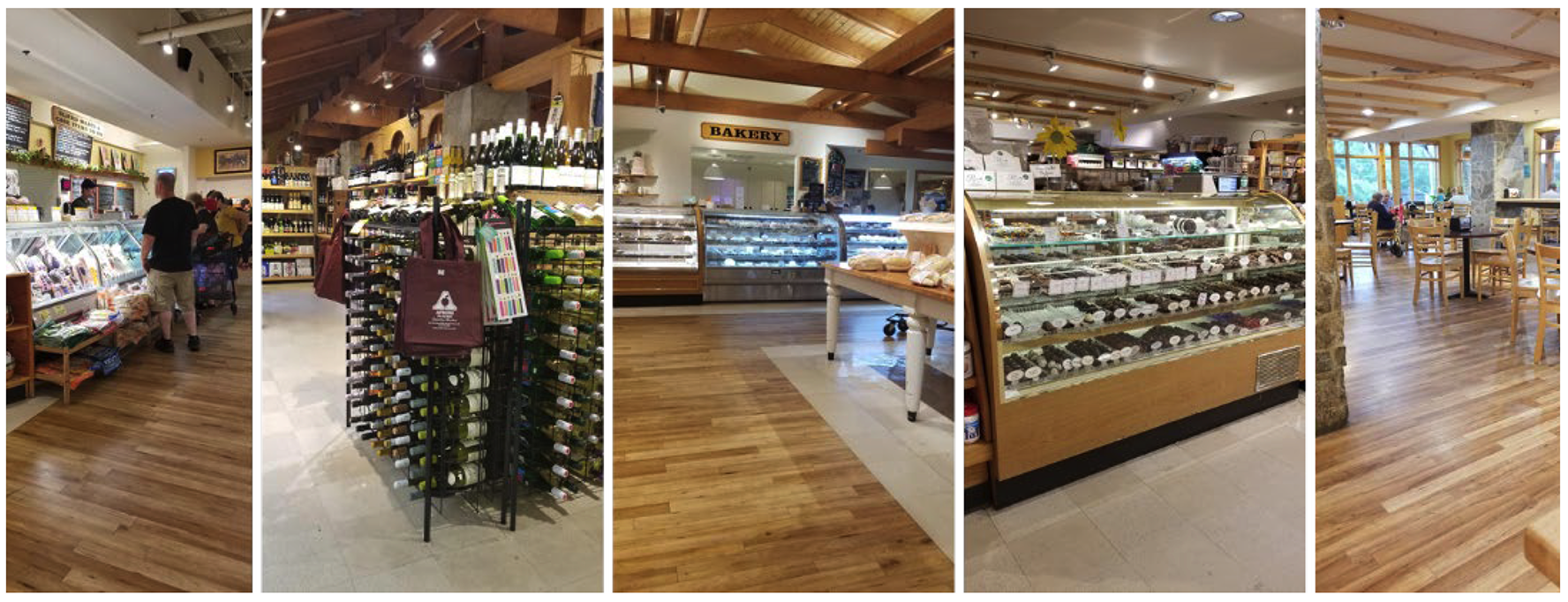
Source: Kantar Consulting Store Tours
9 Summarized from https://www.atkinsfarms.com/about-us/our-history/
New future formats are already emerging, with the Hybrid Farm-Store a key focus.
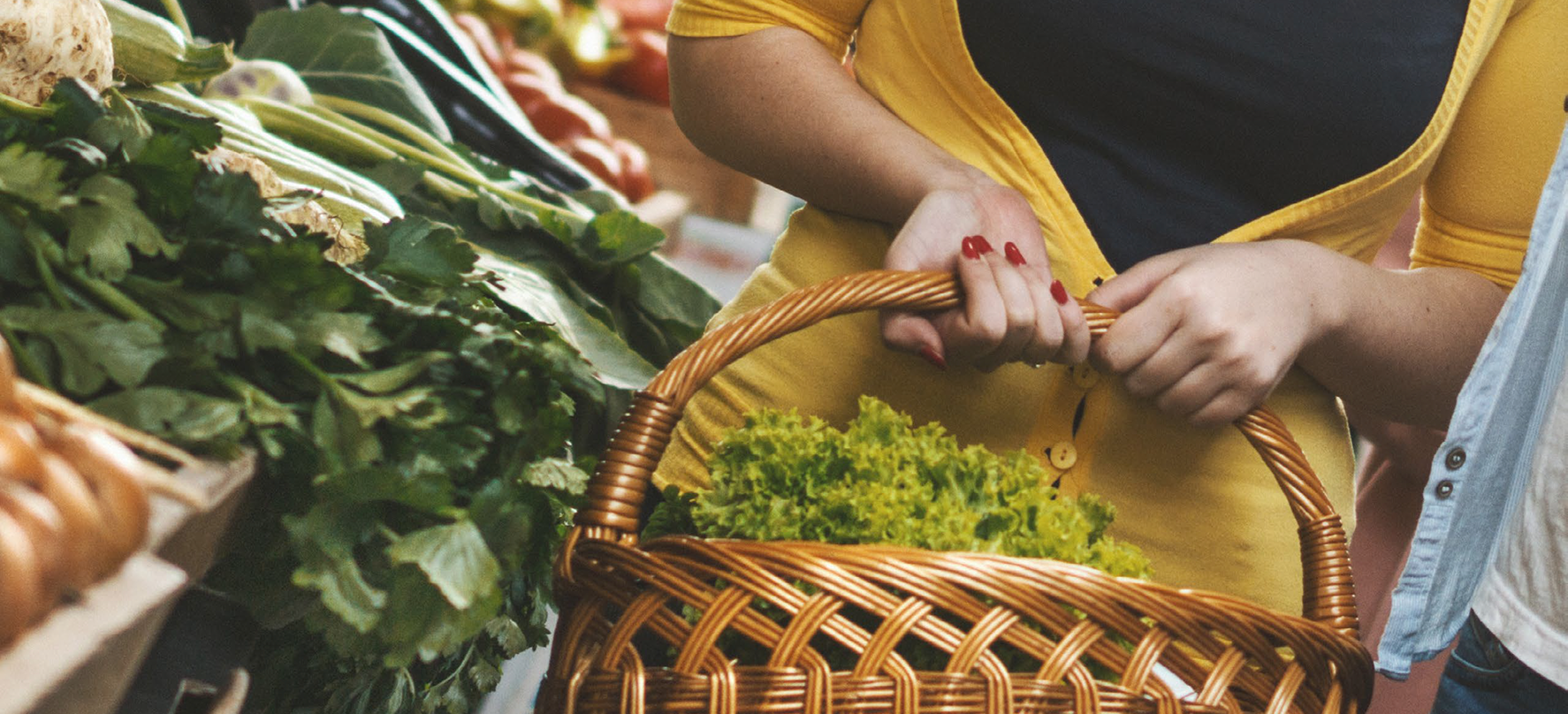
Infarm is a German company that is providing the expertise and equipment for urban farming along with in-store operations and merchandising of their production. It markets to locally sourced, superior quality, and taste that is closer to ‘real’.

Source: https://infarm.com/
At the same time, “mass market” shoppers increasingly seek out new foods and tastes, such as sushi, tacos, pierogis, jambalaya, falafel, and pad Thai. The increasing popularity of food halls is an indicator of shoppers’ desires to explore new options; insightful retailers should not only respond, but also encourage this as a key advantage that the physical store can exploit, with event marketing centered on new food sampling and preparation advice. This will require space, trained personnel, and a commitment to bring a sense of theater to the presentation of food. And all that demand for the regional, ethnic, and international food options has resulted in “fusion categories” that will likely proliferate in the coming years.
New future formats are already emerging, with the Hybrid Farm-Store a key focus.
A growing trend to watch is the evolution of small farms into destination grocers. Often located in rural areas transforming to suburbs, farms react to the opportunity of selling their goods direct to the consumer. These “advanced” farm stands are pushing past simple produce into broader perishables, food services, amusement (feed the goats, sheep, fowl), to value-add (sleigh rides, pumpkin picking), home centers and ultimately to full grocery stores. These retail formats embody their farm origins in both the physical space, and the wholesome-goodness aspect that shopping at a farm embodies. Connecting to the farm via this growing format requires making a dedicated trip to the farm.
The other evolution now underway is evolving the traditional store into a working farm. Living walls of plants continue to become common outside the US as means of décor but also functioning within and outside the store. Rooftop green space, starting out as an energy saving measure to modulate heat and cold, has become a regulatory requirement (or tax credit) in many global cities. Chedraui in Santa Fe, Mexico, and Ahold in Amsterdam have large farms atop the roofs of flagship stores. But the real potential coming is edible plants within the store by way of vertical farming (drip irrigation in vertical columns of soil-based plants), mushroom growing embedded in the produce department, or via hydroponic plants such as lettuce. The latter is already highly automated in existing farms, often including fresh water fish tilapia living in a balanced environment in the same tanks. In all cases, retailers are providing a “real farm” freshness to increase the value of the store — along with an experiential shopping trip.
Grocers who identify closely with products’ origins often maintain competitive positions. The more the store comes to resemble an active farm-stand environment, the greater the affinity for shoppers. And being able to effectively communicate “the whole” of product production will be integral with store branding.
The New Business Model of Success
The modern supermarket has evolved to balance the needs of both the retailer and the shopper. To fund all this, retailers are increasingly relying on their suppliers to generate item-level profitability. The retailer has become a marketing platform, a distribution system, and a warehouse for national and regional brands, subject to SKU proliferation and a wide range of costs that are essentially a replacement for relying on the shoppers as the primary source of revenue. No one with any experience in the industry has any illusions about the tensions and behaviors this dynamic has created.
The rise of new shopping and delivery platforms — especially online and direct-to-consumer marketplaces — has introduced new stress into this system. Ultimately, the successful retailer of the future should rely on the shoppers’ selection and long-term engagement, with store productivity (spend and profitability) as the key metric to measure success.
The business model for the retailer and its surrounding suppliers will transition in the future to reflect the new requirement of driving sales via promotion. The seamless omnichannel digital shopper will not respond to shelf space in a physical store in the manner that has been financially supported by vendors in the past. As media and marketing become diffused, and yet more personalized, advertising space in traditional printed circulars is already losing value. And the core processes of the buyer to leverage fees for manufacturer access to shelves of the store must evolve to reflect new requirements for engaging shoppers.
And yet the store of the future will have more active visible marketing opportunities than ever before. The level of actionable data will vastly increase. Throughout, the store will work hard to retain the traffic, goodwill, and attention of the vast majority of its loyal shoppers. These are tangible assets.
Some important considerations related to the effective management of the store of the future are outlined on the following pages.
Marketing and Branding
Marketing at the chain or regional level will become more personalized, store- and location-based, and interactive. This will require a complex shift from centralized brand-retailer programs modeled after today’s mass media management to a more particular, granular brand-store-shopper process. This will resemble a digital loyalty reward system with the addition that shoppers can also reward the retailer via ratings and reviews — much like the dual-review systems enabled by Uber and Lyft, or Airbnb. Retailers will leverage a blend of customer data, product performance, and success metrics with shoppers to access different fund levels from manufacturers and distributors — evolving today’s trade-spend systems.
Branding expands from one-way “broadcast mode” messaging to two-way interactivity and calls for transparency, all enabled by real-time shopper reviews and archival feedback tracking shopper expectations over time.
Branding in the future will be the result of evolving, transparent information and predictable messaging of new experiences. This is already the case with more innovative and high-quality “own label” products at many retailers, and this will expand in the future. The branding of experiential departments within the store will also increase, helping to establish a two-way, value-based relationship with the shopper.

Future Proofing
This publication opened with an acknowledgment of the stress or anxiety that many companies feel when planning for the future. That anxiety has been accumulating since the mid-20th century, detailed in Alvin Toffler’s “Future Shock”10 in 1970 and “The Third Wave”11 a decade later. Technology, communication, and social-based changes are not only linked but have accelerated into overlapping iterations. These shifts in capabilities result from proliferation of the internet, wi-fi, smart devices, AI and movement of ever larger amounts of data, and faster innovations that create the new and even more unexpected.
Today, individuals are savvy and nimble, gathering information, benchmarking options, and making decisions faster than ever. In many ways individuals are better equipped to surf this turbulent ocean than large, complex organizations with major investments in existing technology and outdated processes. The stress of missing a critical change is made worse by employees and shoppers being comfortable racing ahead with trial and experimentation, especially online. Traditional companies can operate as well in “internet time.” For example, individuals still can find information on almost any topic via their smart devices in a store versus the less flexible closed-systems provided by many retailers to help their store floor employees.
10 Alvin Toffler, Future Shock, Random House, 1970.
11 Alvin Toffler, The Third Wave, Bantam Books, 1980.
“Future proofing” — i.e., the process by which we scenario-plan for the unexpected — emerges as a response to the chaos of so much fast-moving change. The store of the future is an investment of resources and funds by the retailer that should not be made casually but must be made within uncertainty. Armed with an assumption of ongoing uncertainty, forward- looking retailers and suppliers can generate a list of potential future demands and response criteria to inform new capabilities and likely investments required to compete effectively in the future.
- Position the store to expand to new missions: Select physical sites that maximize business model flexibility, design walls that can be moved without massive disruption, and ensure that power options can be quickly expanded to meet a range of future needs. Alternative pickup options, new services, and channel expansion are initiatives that are easier to accomplish.
- Leverage and test the legacy store: Store engineering, real estate, personnel, and operations teams will all need to collaborate at a high level as new capabilities and technologies emerge. Care must be taken to develop, test, learn, and perfect new solutions before legacy systems are fully replaced — the real world is often unkind to prototypes. Existing stores are assets to be reused, but only after being tested to their new roles.
- Plan to review emerging “lifecycle” expectations regularly: Planning should include a step that considers future-focused building uses annually. This exercise should not occur every five or so years. Make sure all building and redesign information is accessible and useful for this planning purpose.
- Ensure flexibility and adaptability: Ideally nothing should be permanently attached or inserted into the store. Power, communications, and monitoring should be placed in the ceiling to maximize multiple uses.
- Design for pop-up or long-term: Build per time expectations, not just missions. Design a pop-up to be easily moved and reused. Long-term planning involves is not just materials but expectations to walls and surfaces changing in the future.
- Factor-in service model requirements: Move away from product-only space planning. Build in open space to be flexible, enabling dynamic use and flexibility to meet new service desk needs. For example, PetSmart has opened up the front of stores using moveable barriers to accommodate pet training, grooming, and events.
- Expect neighborhoods and catchment areas to change: Stores are fixed in place, but people and transportation are not. Plan on surrounding areas shifting to new populations and commuting changes while reviewing store design flexibility — not only for space use but also for branding.
- Diversify financing requirements: Capital spend on building and fixtures should be adjusted to shorter cycles of remodeling and repositioning of existing assets. Review current rules to amortization and depreciation with an expectation of shortened cycles, though ideally the selection of equipment may assume a longer use life. Add a line to the P&L to enable ongoing R&D (research and development) investment, which is a norm in other industries.
- Stay local and educational: Be hyperfocused on what is local to geographies, including communications, social media, and expanded communities of interest. Never let up on the re-education of shoppers and employees to maximize the evolving value of the store.
Beware the Distractions!
The future may well be amazing, but it’s not likely to resemble the future portrayed in cartoons such as The Jetsons, with spaceship-style cars that fold up into a briefcase, and perpetuated so often in today’s media. Below are a few “hot topics” to avoid in future-focused retail planning, until proven otherwise:
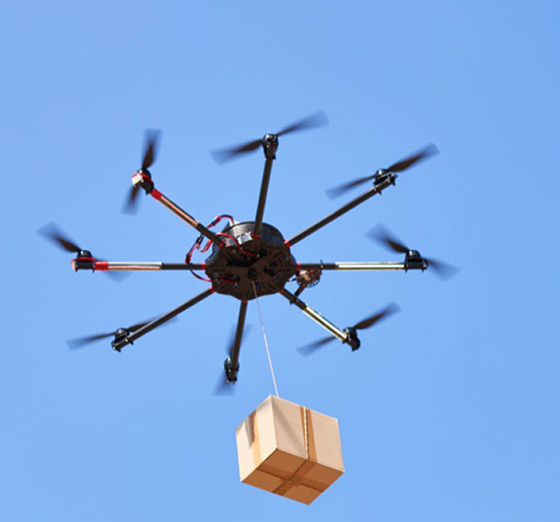
Flying drone deliveries
Drones are handy gadgets to use to take pictures and video, maybe delivering the surprise pizza, but the relationship of the power needed to carry a significant load greater than a couple of kilometers means a machine of considerable size and weight. In the US, FAA rules eliminate any real world and profitable usage in suburbs or cities. And insurance companies dislike the liabilities of large objects falling in the wrong place, or in densely populated areas.
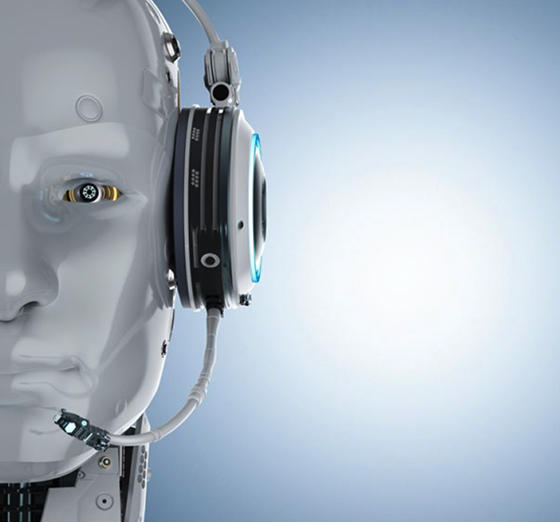
Walking humanoid robots
The key advantage of making a robot human-like is that it can operate in a human world to easily transition into the everyday. The biggest challenge is balance, pivoting, and variable motions which underpin being humanoid and continue to defeat advanced robotic studies. AI, for example, may be able to predict needs and adjust rapidly, but moving like a human while accomplishing simple tasks is still beyond current or near-term execution.
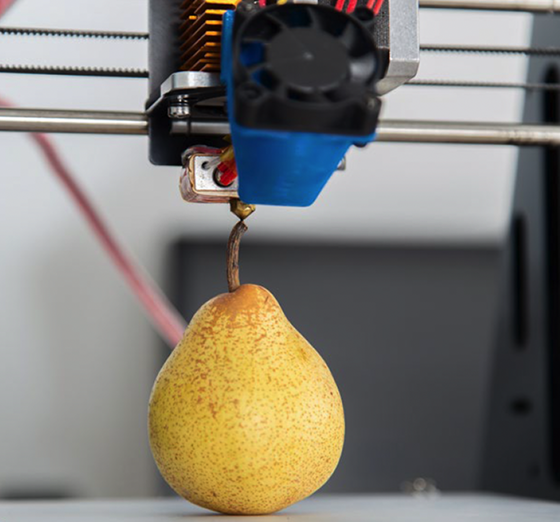
3D printing of food in the home
The ability to make working objects of incredible complexity to precise metrics is the wonder of current and future 3D printing. But generally this is normally from a single source of material or layered with a few others. Making food “to order” will require not only a very complex (and expensive) printer it will need far more sources of liquid materials to leverage into complex textures and flavors. No question this technology will transform food offerings in the future, but for the near term (at least a decade) 3D printing will remain beyond everyday or home use.

The Store of the Future & the Placement of Labor
Moving labor-intensive activities into the supply chain has accelerated in the last few years, most notably in the meat department. It is now quite possible to run a credible meat case without anyone encountering the meat itself. This is accomplished by having meat prepared in locker plants and packaged attractively in clear packaging that the shopper has accepted readily. Not only is the labor removed from the store, but the product has a longer shelf life and comes in more ready-to-prepare variations, improving the overall value. For smaller independent retailers, having quality meats being handled by trained cutters to meet the requests of the observing and engaged shopper is the far greater value and trip driver. Almost all parts of the store reflect this tension of value to the customer versus what the store can provide — and what the store can provide includes services.
In trying to predict the world looking ten years out, the temptation is to see stores as being self-managing and operating not unlike the small kiosk stores that have emerged in China. The ideal is to have labor shared across locations for cleaning, restocking, and merchandising — greatly reducing SG&A costs. A likely part of this will come in convenience stores as they become an expert in the controlling of access and payment to shoppers along with effective loss prevention, though even in these scenarios most companies expect to have at least one employee in the store. For the larger grocery formats the integration of sensor, AI, and robotic carriers to move product using drone land vehicles to deliver a short distance away will be real. Much of this will enter smaller independent formats via store-wide use of sensor and simple AI to create a more predictive environment, not unlike HVAC moving to third-party management a decade ago. But the key variable will be where and when it is best to place the employee and manager to create shopper value.
In either case, labor in the store must be cross-trained to interact with the shopper and a highly automated space. And the reality of retail is that even simple processes and supporting equipment can fail at the least opportune moments. Thus, cross-training should focus on managing the gaps of complex store productivity along with quick diagnostic reviews of what is wrong and how to return to full use. Clearly that investment in this type of broad training will place more weight on the retailer to hold onto labor longer — and compensate accordingly.
At left is BingoBox, an unmanned kiosk that launched from JD.com, Auchan, and GGV Capital with 600 locations in China. At right, the new Carrefour Le Marche store in partnership with Tencent with facial recognition and cashier-less checkout.

Sources: GGV Capital, Tencent Holdings
All of this is decidedly more important to operational management which still will have the responsibility of ensuring that the store is productive and profitable in the future.
Store managers need more insights and less oversight. The challenge is that in the future retailers will be largely unable to provide either.
Without a filter or lens to identify what is most important, more data often leads to having to manage more data — and ongoing confusion over what to do with it. Too much oversight trains a manager to hesitate in making decisions, with the fear of being continually second-guessed. Having AI generate curated reports of key issues to address in a timely fashion is one answer, but it will require a new form of training regimen. Another option is to communicate insights via text message, verbal cues, and fixture alerts. The key will be one of flow, how to absorb and internalize insights and alerts on the fly while continuing to be an effective manager of both people and assets.
Every industry and institution has had to contend with the tension related to managing greater metrics and details flowing upward from operations to senior staff. The temptation to insert oneself into the picture to make the best (or safest) decision possible may have shown itself in the worst light within the military. No matter how “real-time” the information and feedback, real-life experience has proven that the person on-the-ground still has the best means of assessing and acting. Too much oversight causes front-line management to play it safe, anticipating inevitable HQ-based corrections. This is seen clearly in the data-intensive US military where almost any decision is subject to review and critique from above. At all levels, training now emphasizes the impact of ‘playing it safe’ to the failure of missions that require on-the-spot decision making. 75 AN

The New P&L and Balance Sheets
The store of the future may well be built on a foundation of rapidly evolving innovation, automation, process enhancements, new materials, and power sources. It will also be a store that functions within most of the existing rules of finance. Experimental stores built by larger retailers are not expected to be profitable, and those generated from venture capital funds are mainly driven to generate sales improvements to justify further investments. However, if we start with a viewpoint that the store variations described in this publication make up a new norm, then “normal” finance drivers should invariably be addressed.
Ownership is critical in looking at the financials since a publicly traded company has the means of raising additional capital and gaining assurances of future investments that are not possible for a privately owned firm. However, public companies must contend with those shareholders that have contributed to the growth and have expectations of a return on those investments, often quarterly. Investors and stock analysts also watch closely to track expected spend on labor and inventory while closely watching liabilities and the ratios of cash-to-obligation. Same-store sales make up another metric that indicates the leveraging of the main asset, the store. In short, a healthy public company with a strong relationship with investors and proven ability to generate returns is well placed for growing into the future.
Being an independent private company means that almost all of these “negative” pressures are of lesser concern. Nonetheless, private ownership does not mean leadership can just ignore these financial metrics; the key benefit is having the ability to shift spending, investment, and cost savings without being exposed quarterly. There is also the challenge of raising additional funds beyond family holdings and ongoing revenues. Long-term investors (such as trusts and group funds) still prefer the longer term advantages of independent ownership.
In a decade, retail will still require a profitable cooperation of income, costs, invested capital, and fixed asset management.
This framework depicts the financial management of retailing — a means of realizing the impact of overlapping processes that cross both the P&L and Balance Sheet to create overall value to the company’s owners.
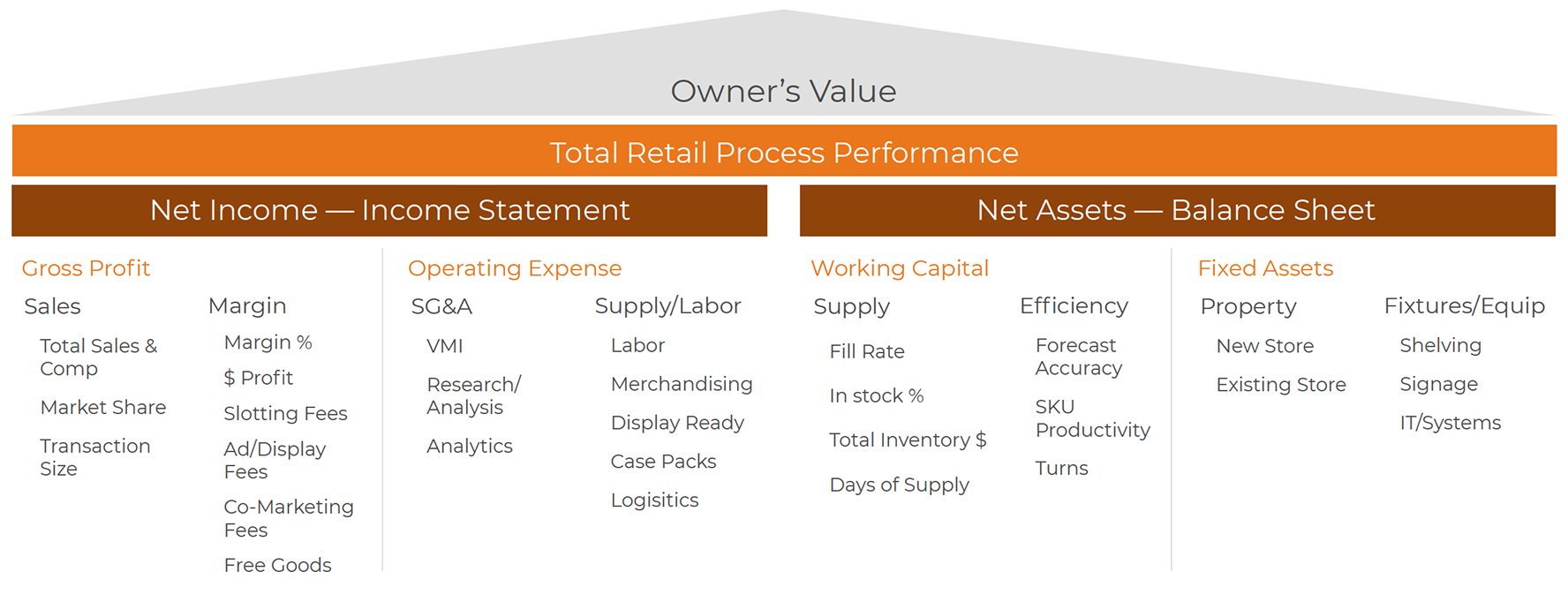
Source: Kantar Consulting
Complex variations in current retail models have become common. It is safe to assume that trend will increase into the near future. But the impact to the P&L can be summarized as:
Increased sales: Top-line improvements are key. Supporting more than basic cash flow, they increase the potential for shifting to new investments rapidly, based on market changes. To increase sales will require protecting existing models of shopper interaction along with a more flexible approach to refining product and service offerings.
- Center Store [see page 19] will require creating a much more flexible space with reduced everyday SKUs, an increase in service revenue, and more in/ out products to drive better margins.
- Expanded product selections overall via extension to eCommerce
- Greater emphasis on services offered
- More effective responses to in-store shopper needs via monitors, employee training, and overall AI coordination — resulting in increased loyalty and sales.
Managing and reducing costs: This may represent the area of greatest improvements, given changes in labor models and the enhanced monitoring of store dynamics.
- A large part of controllable retail costs involves labor. Compared to manufacturing, the increases in complex automation and production flexibility in retail put more emphasis on highly qualified labor that will cost more to retain and educate over time. But there will be markedly fewer employees overall.
- With increased monitoring of the store, shoppers, and employees, it will be normal to redirect labor to the right place at the right time to add value. Done effectively, this coordination reduces the number of employees needed, but focuses all energy and effort on serving the immediate and real needs of shoppers.
- The net result will be a reduction in SG&A along with a further reduction in other controllable costs. But the remaining costs will need to be managed closer to measurable value to shopper loyalty.
Inventory or invested capital: Inventory spans the physical (products), services (payment given ahead of need), and financial (warranties or liabilities), but in all cases requires investment of capital. When inventory stops turning or being productive it holds that same capital preventing further investment, which leads to loss-leading clearance sales and, in worse case scenarios, store liquidations. In the future, it will be critical to ensure that capital remains fluid to free up cash flow in a highly dynamic environment.
- Just in time (JIT) and use as needed (UAN) represent the future standards of optimized inventory management. Real-time awareness of inventory status is expanded fully back to the manufacturer and outward to the shoppers’ demands and shifting preferences.
- Reduced SKUs and overall inventory-on-hand is an extension of the above as products are moved in and out of the store, shifted to online availability, or eliminated as the store mission changes.
- Fine-tuned loans and investment will be based on accessing and managing risk in future “data-intense” settings. This creates more options for finding shortterm loans to finance inventory while still selling at a profit. Note this also could mean that the expenses associate with servicing loans will drop with the reduction of risk.
In the future, retailers will make tradeoffs of having less inventory on hand, turning more rapidly, due to better data and analytics — freeing up cash flow to shift to capital.
Fixed capital or capital expense (CapEx) involves the acts of capability building (via store building/openings), fixture investments, and computing integration. In short, CapEx funds are spent on objects and services that are not intended to be sold. And almost everything described in this section will require capital investment to create newly emerging capabilities.
- Automation and robotics will reduce the need for labor, but the trade-off is additional capital dedicated to purchasing such capabilities, along with upkeep and replacement cycles. The amount needed is associated with the devaluation of assets going through rapid cycles of generational changes — predictably, involving almost all technologies. Clearly this will require evaluations to ownership and leasing, though it may lend itself to new forms of business sharing agreements.
- Brokering for flexibility normally costs more than purchasing fixed, single-use objects. In the future, fixtures, lighting, floors, and refrigeration will be shifted about and reused in new arrangements and layouts — all of this is part of future retailing. None of this will come cheap. Longer lasting assets can be depreciated against balance sheets over greater periods, reducing costs.
- Computing, AI, and integration of smart devices is another cost but one that most companies are likely to leverage — especially focused on leasing storage space and capabilities from a growing list of cloudbased providers. Most of the enabling players continue to expand into adjacent capabilities and aggressively package these capabilities into a total “enabling environment.” As daunting as this may seem to large and small retailers, in a decade’s time it may become a more reasonable cost to manage.
Other financial implications of the store of the future will require a strong understanding (and capability) of running a range of models at once, such as eCommerce and app retailing, food service, expanded services business models, and alternative financial services. The key to understanding the overall model in a decade’s time is that the costs of gaining investment will change as well, potentially for the better via improved risk assessment and AI-enabled micro-adjustments from banks and other investors. The increased reliance on free cash will enable retailers to change direction quickly, often based on sudden shifts in the market.

Concluding Remarks
This publication opened with a consideration of companies trying to find the tools and solutions needed to thrive in a poorly defined future. This has resulted in a scramble by companies to assess and buy out (at a premium) ":promising companies" using emerging technologies and promising talent. That scramble is not a viable one for retailers with narrow margins and less cash to compete.
One of the limitations of looking into the future is the realization that innovation has accelerated almost beyond comprehension. For one comparison, the evolution of the music industry — moving from LPs and the studio system, to cheaper CDs, then to free streaming and self-publishing, back to the use of LPs again — has created and destroyed thousands of business in only a decade. Another example of technology change involves facial recognition software, which evolved from science fiction to legal recognition in just over 12 or 18 months. The global surge of companies striving to be competitive crosses all industries and borders and requires not only intense cycles of innovation but rapid duplication of anything that looks like it might succeed.
Anything that works is rapidly integrated upward into more complex solutions to establish broader market dominance. Retail has a history of these behaviors but lacks the means of such rapid cycles at scale, at least in complex, mature markets like the US. For example, today there are fewer than 30 cashier-less stores in the US, whereas in China there are more than 1,000. This reality reflects, in part, having time and resources dedicated to mastering online retail first, before evolving back into modern brick-and-mortar chain retail. These “eCommerce-first” companies are now moving to create brick-and-mortar formats, skipping several generations of format and operations-focused retail evolution in the process.
It is worth noting that successful eCommerce giants such as Alibaba and Tencent are shifting further investments to brick-and-mortar formats. They are doing so not to fill a missing gap but to realize the existing potential of the “offline” store to shape and fill the total needs of shoppers. And they are doing so with the technology, insight, and values developed online over the last decade of eCommerce evolution.
Retailers widely recognize the complementary role of online and in-store, with the store being the primary location for shoppers due in part to proximity as well as buying preferences and habits. Brick-and-mortar formats still serve a wider range of shopper needs, trip types, and service demands. But the ongoing generational shift to online shopping first along with friction being taken out of online (reference the Uber app-model) faster than in-store means that the current expansion of online retailing will continue. Omnichannel is not an option; the means of achieving it is.
Companies will compete in this setting by making omnichannel retailing functional and seamless. These integrated operations will enable shoppers to find what they need when they need it, and have the selected products delivered in a practical, cost-effective manner. Today this means click-and-collect, which will continue to be refined and made more efficient for both shoppers and retailers. In the future, this will include alternative drop points and autonomous vehicles handling delivery. As a result, and with all of that complexity growing, retailers should count on shopper expectations continuing to rise.
Inventions are expensive and risky, and they rarely result in the expected outcomes. But they form the basis of innovation, which is a core strength of retail.
Retail is largely still more innovative than it is inventive, adapting the successes of competitors to create new abilities — the end game is always to pique shoppers’ interest, build loyalty, and capture more spend over time. The store of the future will reflect this thinking and though its capabilities will be intended to reach beyond the brick-and-mortar structure, it will still need physical walls to frame the shopping experience. Those walls will be capable of changing color and media, speaking to the shopper directly, and creating a more “fluid” world of media-experience. This will shape how retailers plan and invest in the business to navigate what promises to be a confusing, and dynamic, future.

Contributors
David Marcotte, subject matter expert, is SVP with Kantar Consulting. David leads a team focused on the current and future state of international retail, convenience retailing, technology deployment (CRM/ loyalty programs), and complex retail processes (supply chain). He is an experienced leader of international teams, a strategic consultant, and developer of retail solutions. Before joining Kantar, David was the Business Intelligence lead for Retail and CPG for IBM where he led work in POS, merchandising, loyalty programs, IT design, loss prevention, supply chain, and data modeling. Prior to IBM, David spent 20 years in the retail industry working at all levels — from the shop floor to executive management within operations. He is a past member of the Efficient Consumer Response Category Management Standards Group and the Association for Retail Technology Standards. In addition, David helped write and edit a variety of studies and books, including “Retailing in Emergent Markets” (sponsored by the CCRRC), “Effective Omnichannel Pricing,” “Retail 2020,” and “The Data Warehouse Mentor.”
John Rand, subject matter expert, is founder of Life at Retail, an independent consultancy providing research and consulting solutions for retailer and manufacturer clients. John formerly worked as SVP in Kantar Consulting’s Retail & Market Insights group. John’s expertise focuses on the supermarket, club, and value discounter channels, leveraging nearly five decades of experience in store operations and design, branded product sales, purchasing, merchandising, marketing, category management, and consulting. John has been featured on FMI, GMA, NACDS, and CHPA programs. He has also served on IRI’s Product Advisory Board as well as the GMA/ASMC Technology Steering Committee.
Jim Leonard, content editor, is SVP of Strategic Advisory Services for Kantar Consulting. Jim develops applied research solutions and facilitates go-to-market planning and training, working with retail and market analysts as well as thought leaders from Kantar's sister companies globally. He brings a strong background in benchmarking and planning facilitation, translating best practices into actionable insight for manufacturers, retailers, and activation agencies. He also constructs skill-building and case-based training programs to improve capabilities and joint business planning. His background includes product development, content syndication, classroom training, publishing, and database marketing.
- Research report title goes here
- Research report title goes here
- Research report title goes here
- Blog post title goes right here
- Blog post title goes right here
- Blog post title goes right here
- Blog post title goes right here


